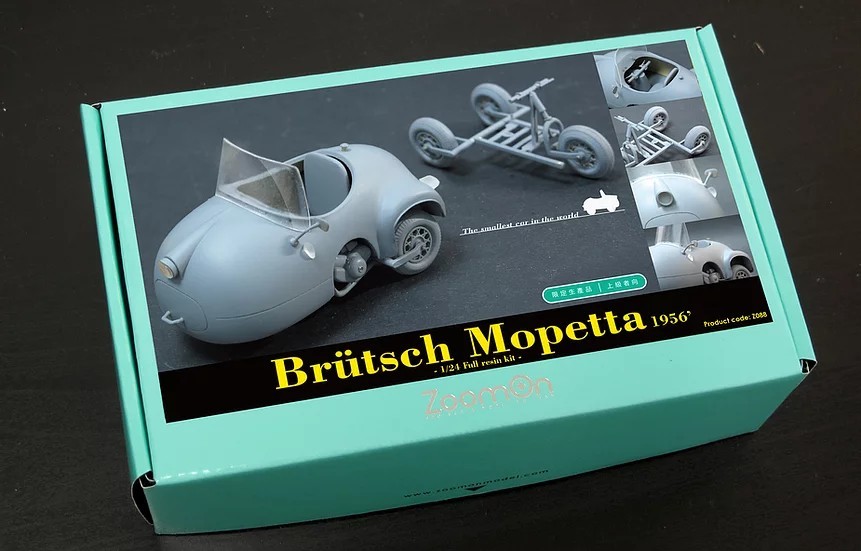
It's almost exactly a year since I reviewed Moebius Models' Hudson Hornet Special, which I just bought just as we went into our first Covid-19 lockdown here in the UK, so it seemed fitting to mark the gradual easing of restrictions here with another kit in the manufacturer's range of classic vintage American cars.
This time I picked the 1955 Chrysler 300 - a real "muscle car" if ever there was one (its name derived from being the first American passenger car to be powered by a 300hp engine). Obviously, from a British perspective, all the classic American cars seem big, but this is simply enormous - last year's Hudson kit would just about fit inside it! At the same time, it's also very elegant, suggesting its formidable power instead of boasting it brazenly.
Moebius Models' kit arrives in a compact and deep top-opening box that is absolutely packed solid with parts - so much so, it actually bulges out when you lift the lid. I've got to make mention of the wonderful retro box art that blends the original brochure illustrations with Moebius Models' fresh elements perfectly.

The plastic parts and accessories are bagged separately, and a nice touch is that there's a piece of paper between the chromed runners to prevent the parts being scratched in transit.
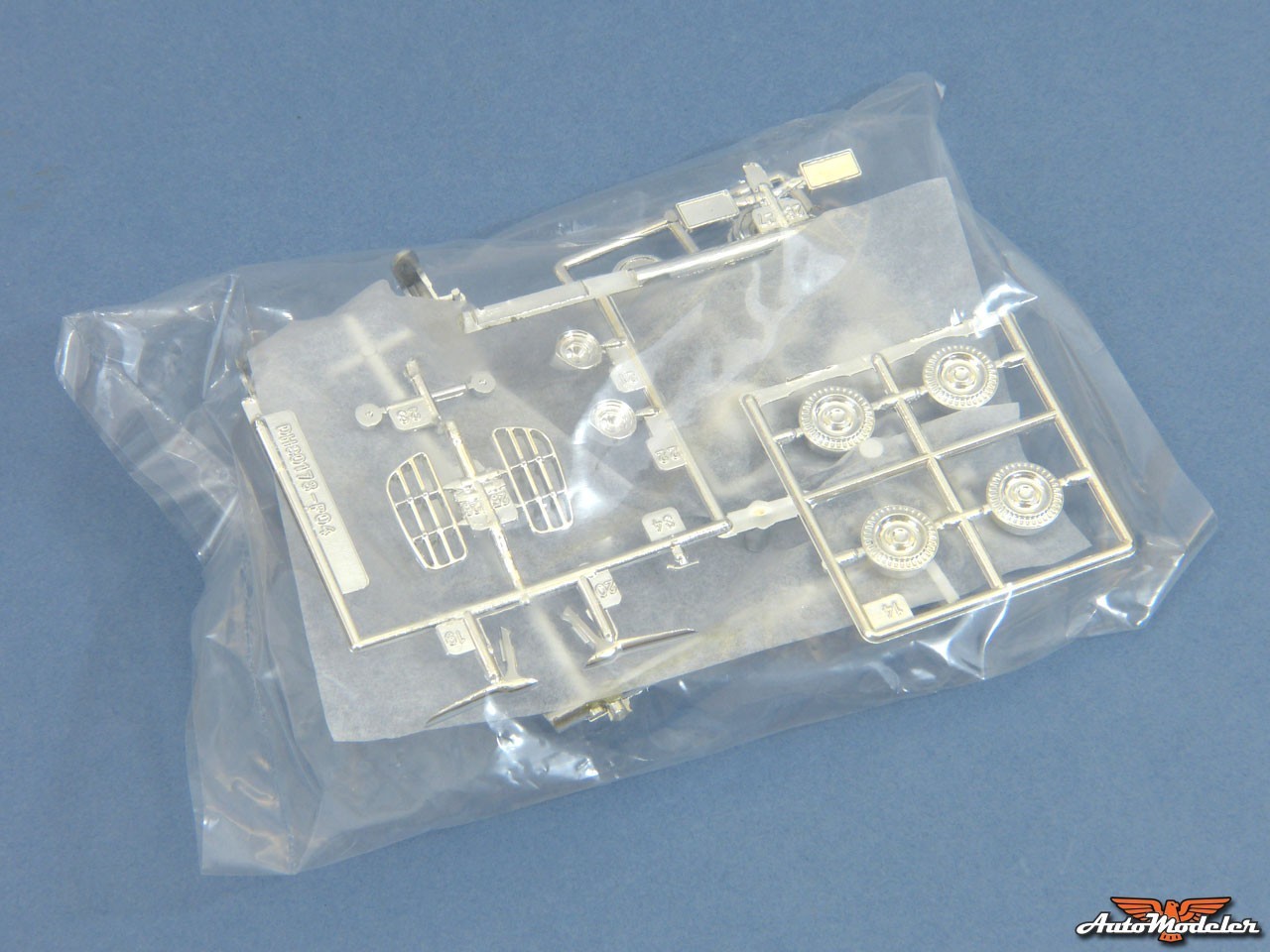
The clear parts are packed in heat-sealed compartments in a single bag - normally a neat way of doing things - but mine somehow got snagged during the process, damaging the rear window. I contacted Moebius Models and they responded very quickly to supply a pristine replacement part.

The kit comprises:
81 x beige-grey styrene parts
29 x chromed styrene parts
8 x clear styrene parts
2 x clear red styrene parts
4 x soft whitewall tyres
Decals
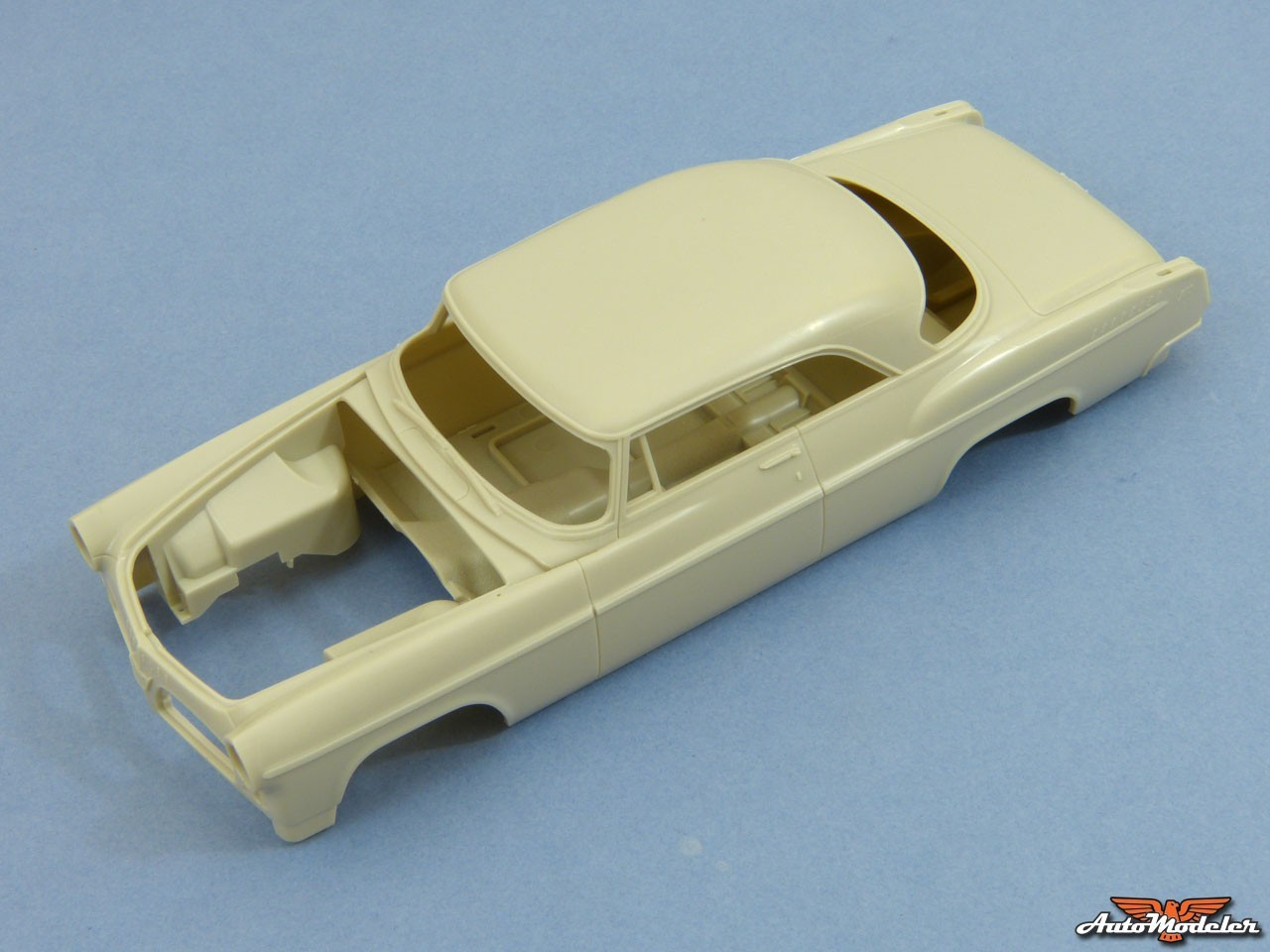
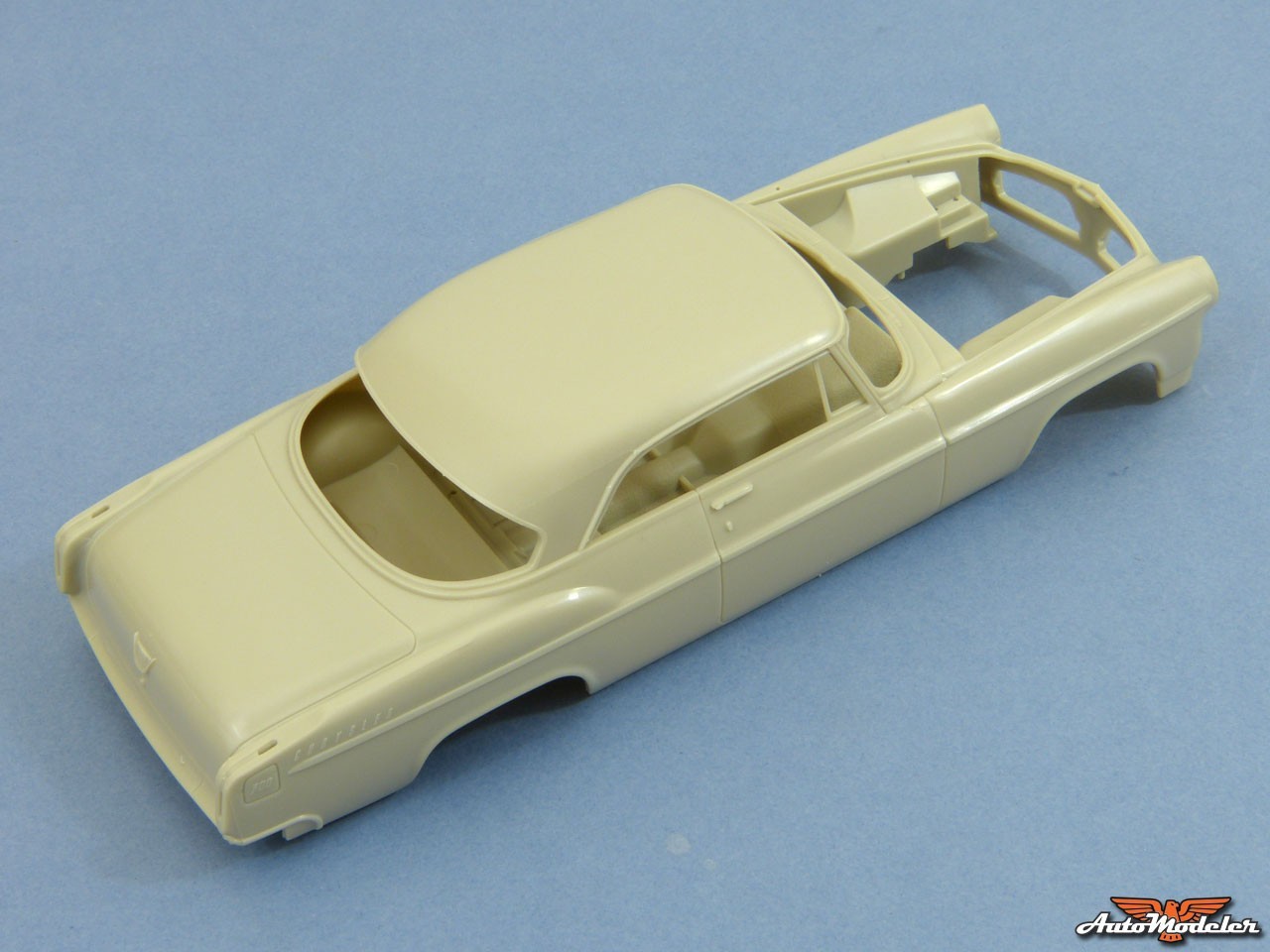

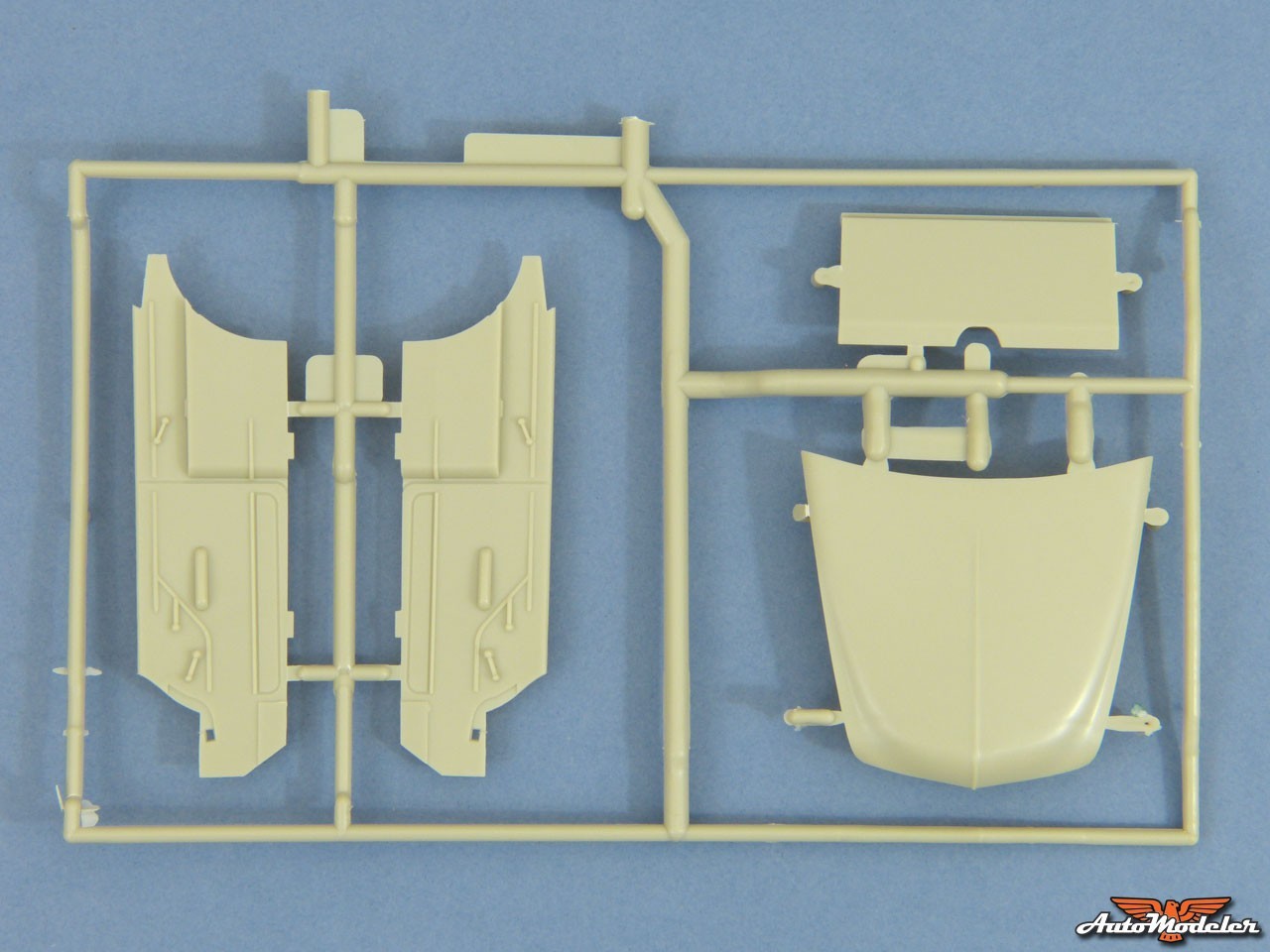
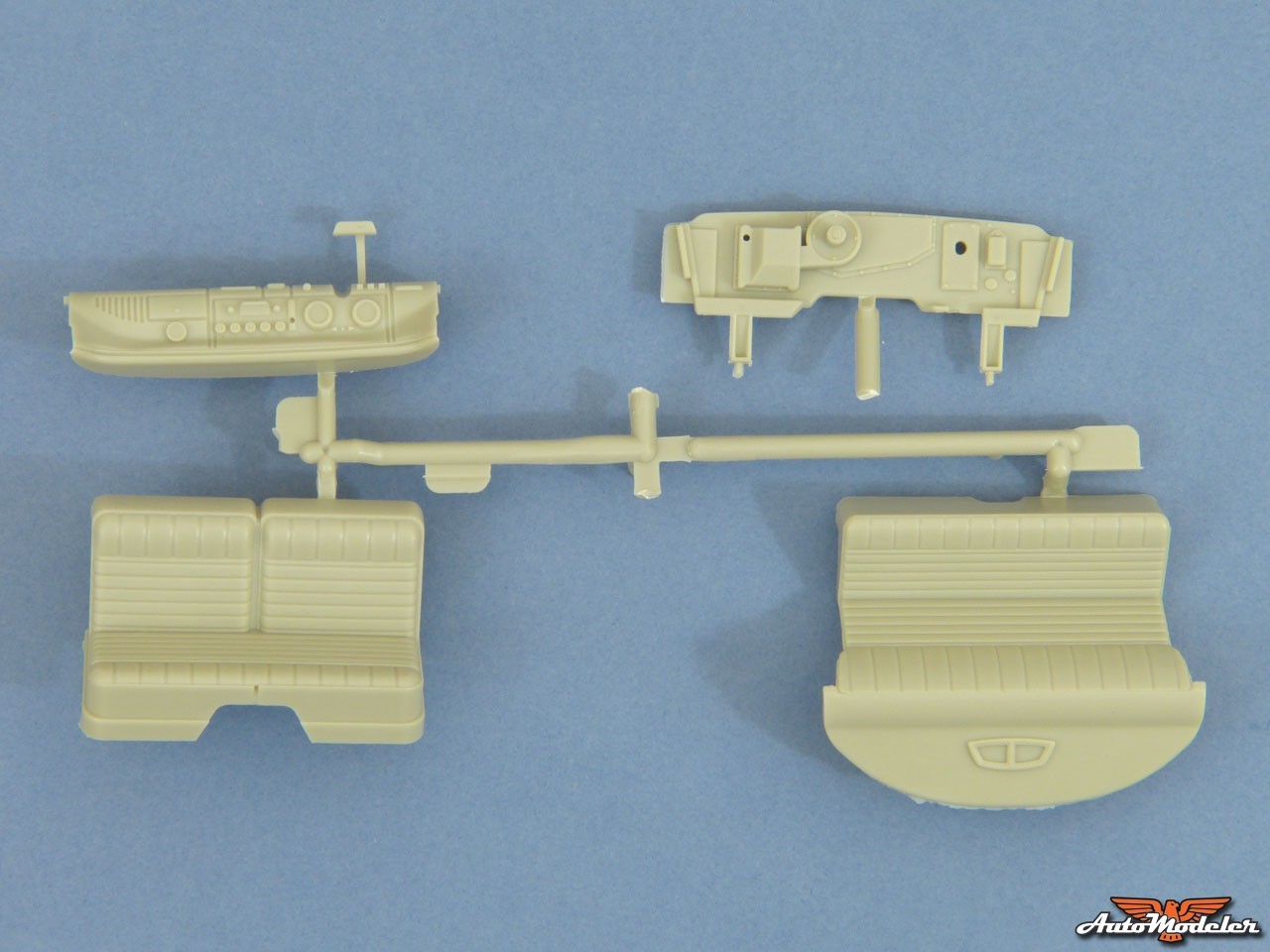

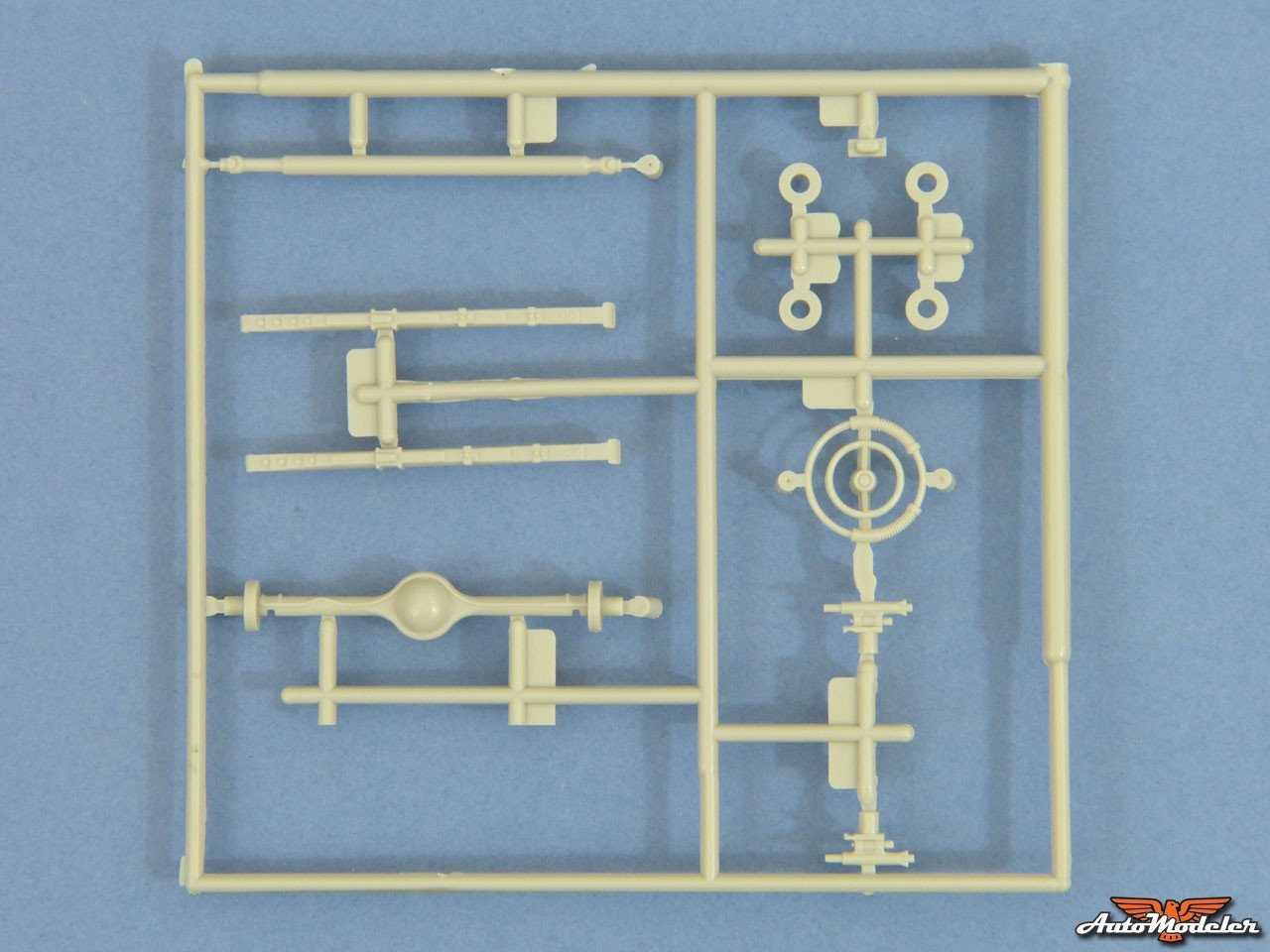
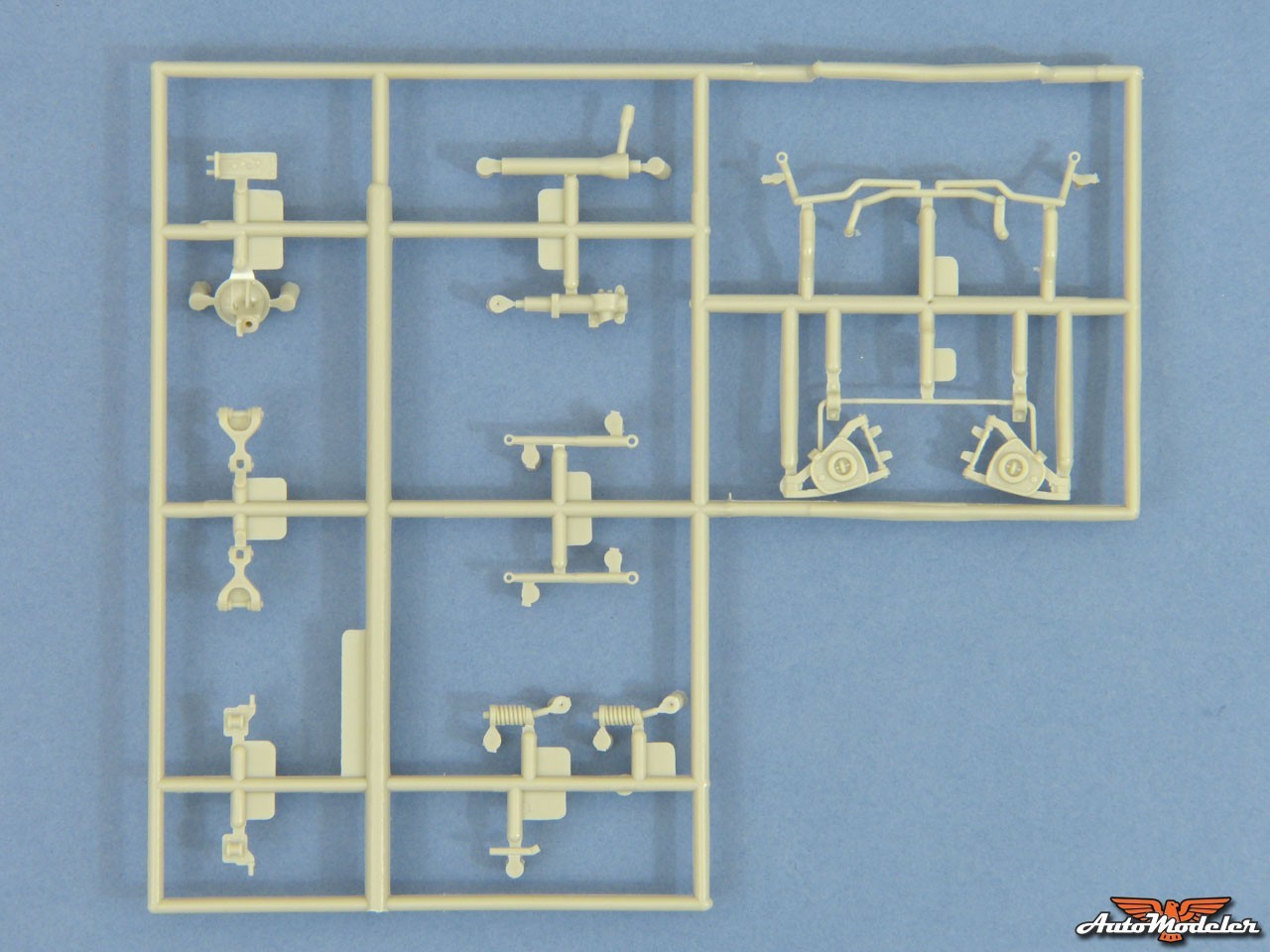

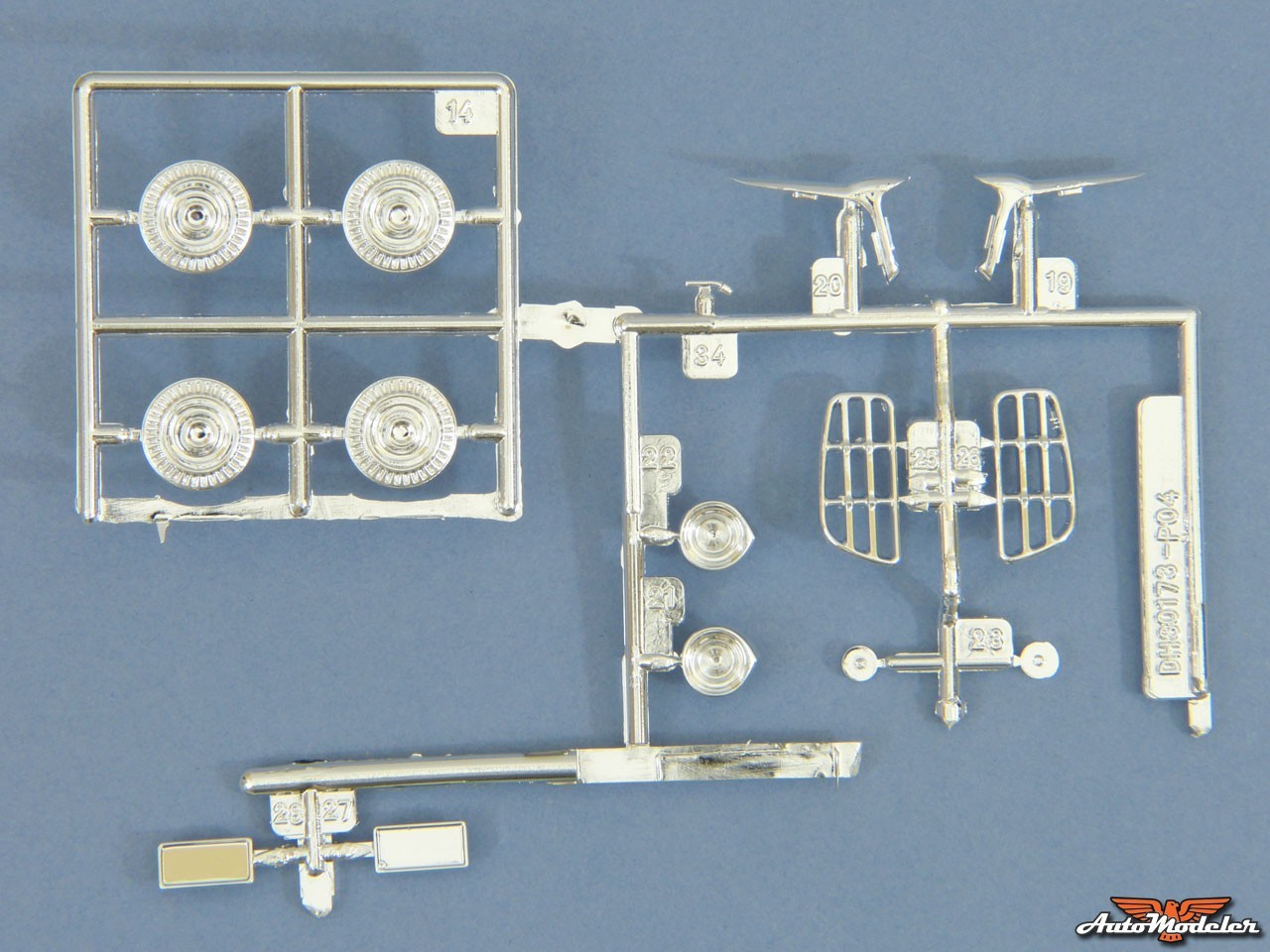

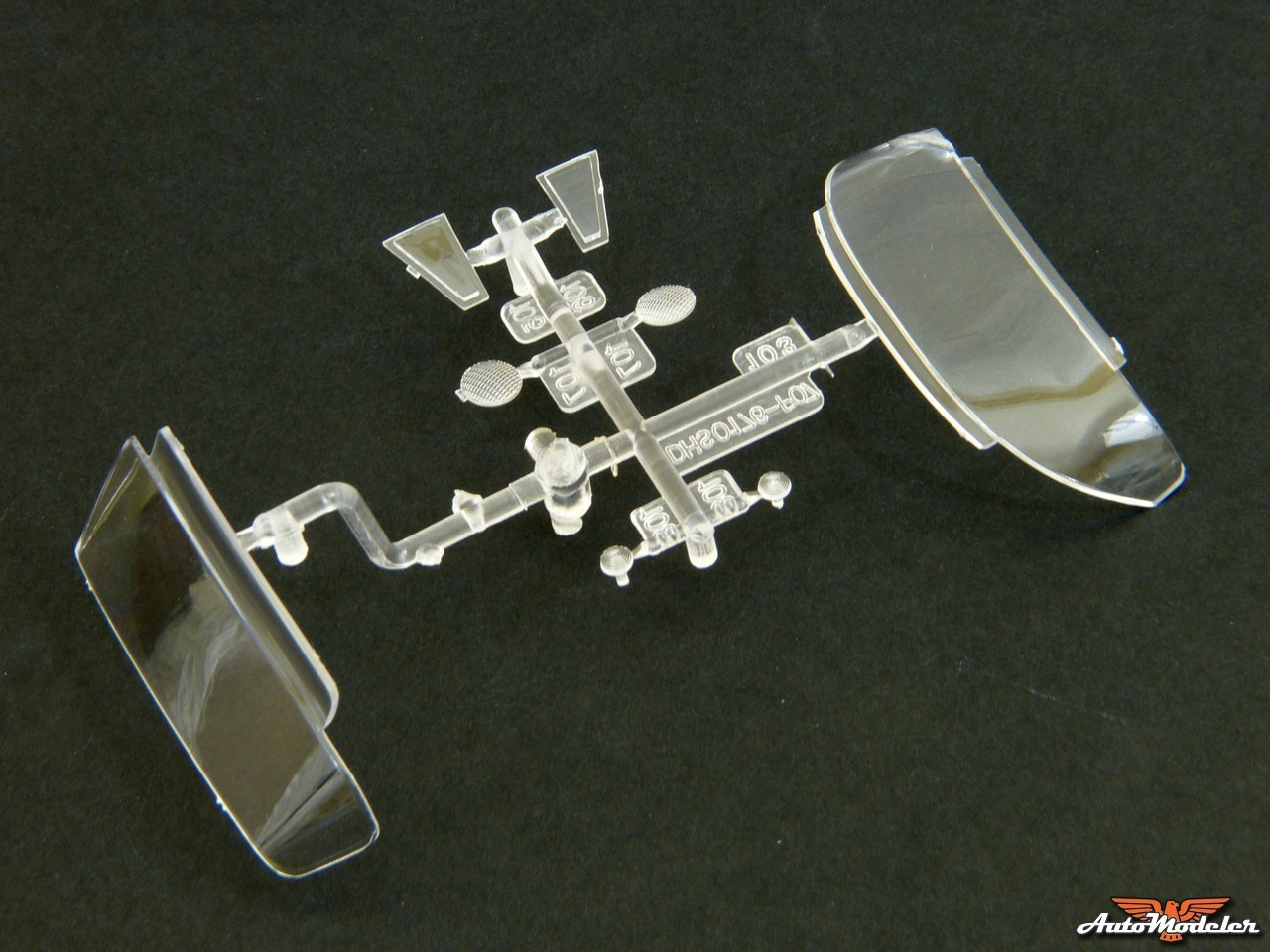
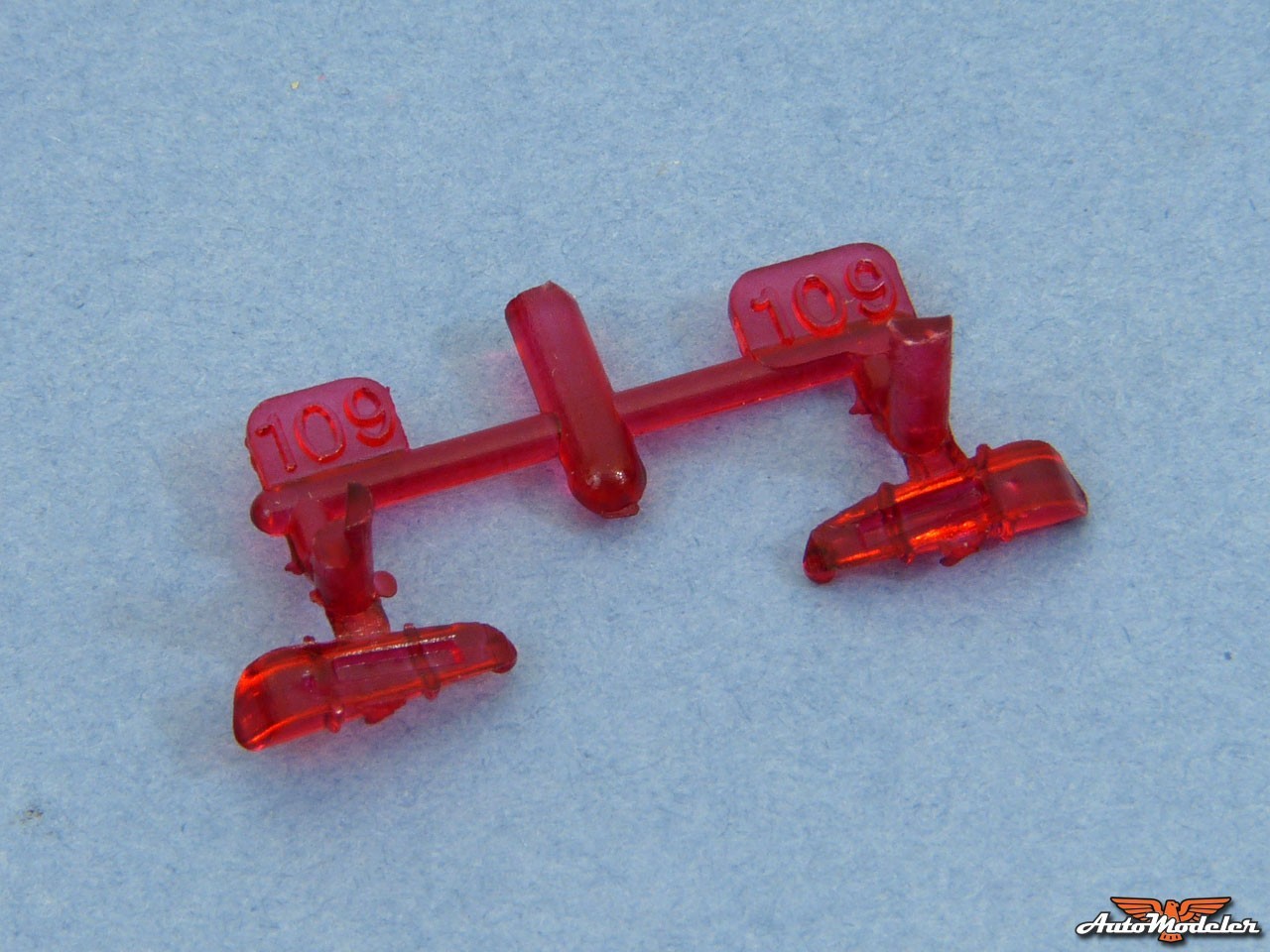
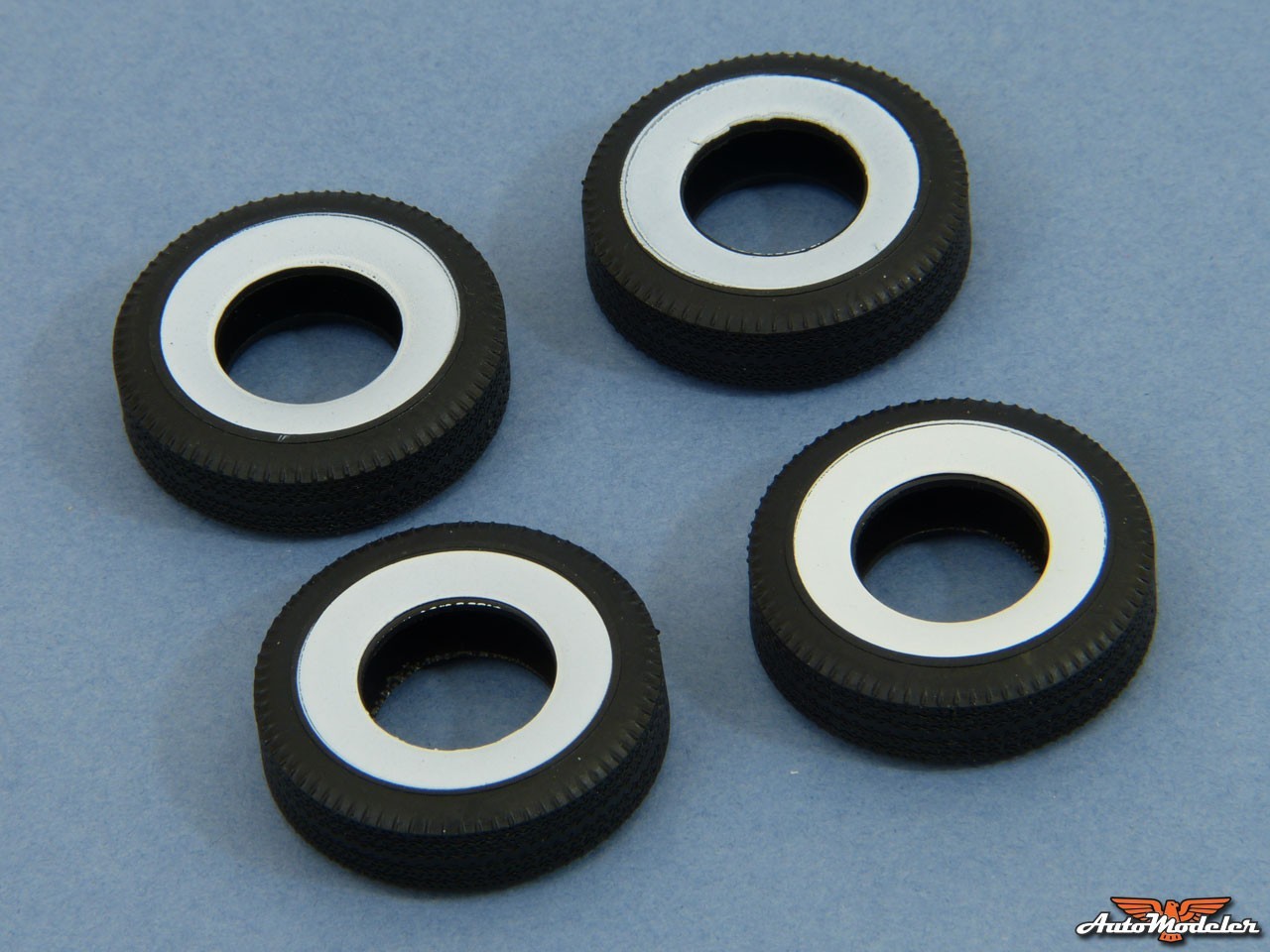
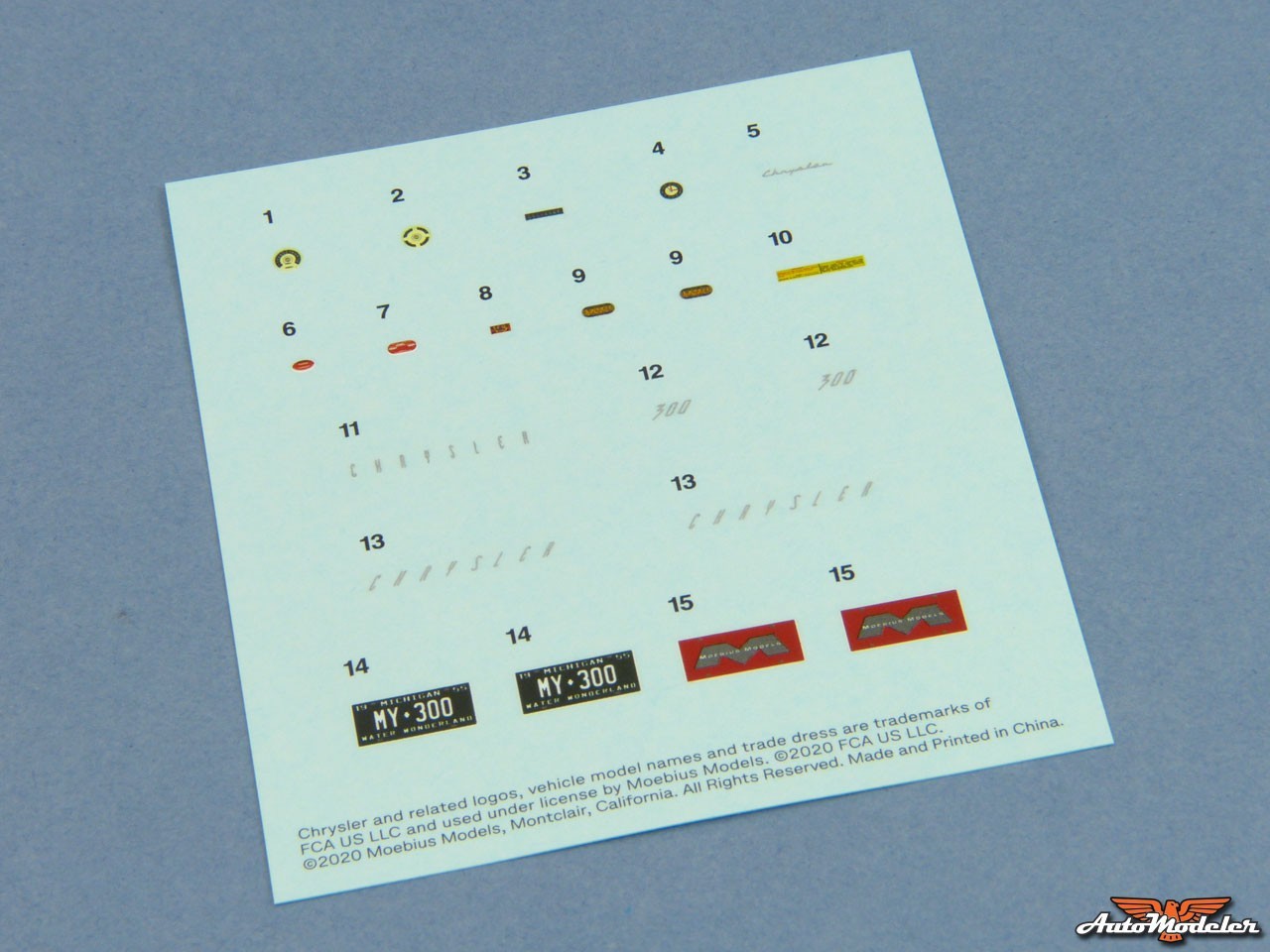
The moulding in my kit is pretty crisp and tidy considering that the kit was released back in 2013. I found a hint of flash here and there, but nothing that will take more than a few ticks to sort out. There are a number of ejection pin marks, though, including raised ones which will interfere with the fit of some of the parts, so be prepared to spend a bit of time on dealing with these ahead of assembly. Against this, the one or two sink marks I've spotted in my kit are very shallow and will be easy to sort out.
As you'd expect, the complex contours of the body require a multi-part mould, so there are inevitably separation lines to clean up. These are very fine, so it's worth double checking you've caught them all at the preparation stage, rather than spot them after you've started painting. The body shell itself is nicely polished, but there a couple of small blemishes that need sanding above the rear bumper which seem to correspond with pin marks on the inside.
The chrome plating is good quality, but the runner attachments mean you'd have to do some careful touch ups to disguise them, plus there are mould seams on the bumpers due to their contours, so I expect many modellers will strip the parts and respray them.
The chassis is dead true in my kit and clips onto the floor pan firmly, the whole subassembly clipping tightly into the body shell. The boot (trunk) and doors are moulded shut, but the bonnet (hood) is separate and fits excellently. The designers have managed to avoid having any ejector pins on the inside surface - a definite plus if you want to pose it open to display the engine (note: this isn't shown as an option in the instructions, despite there seeming to be locations for hinges).

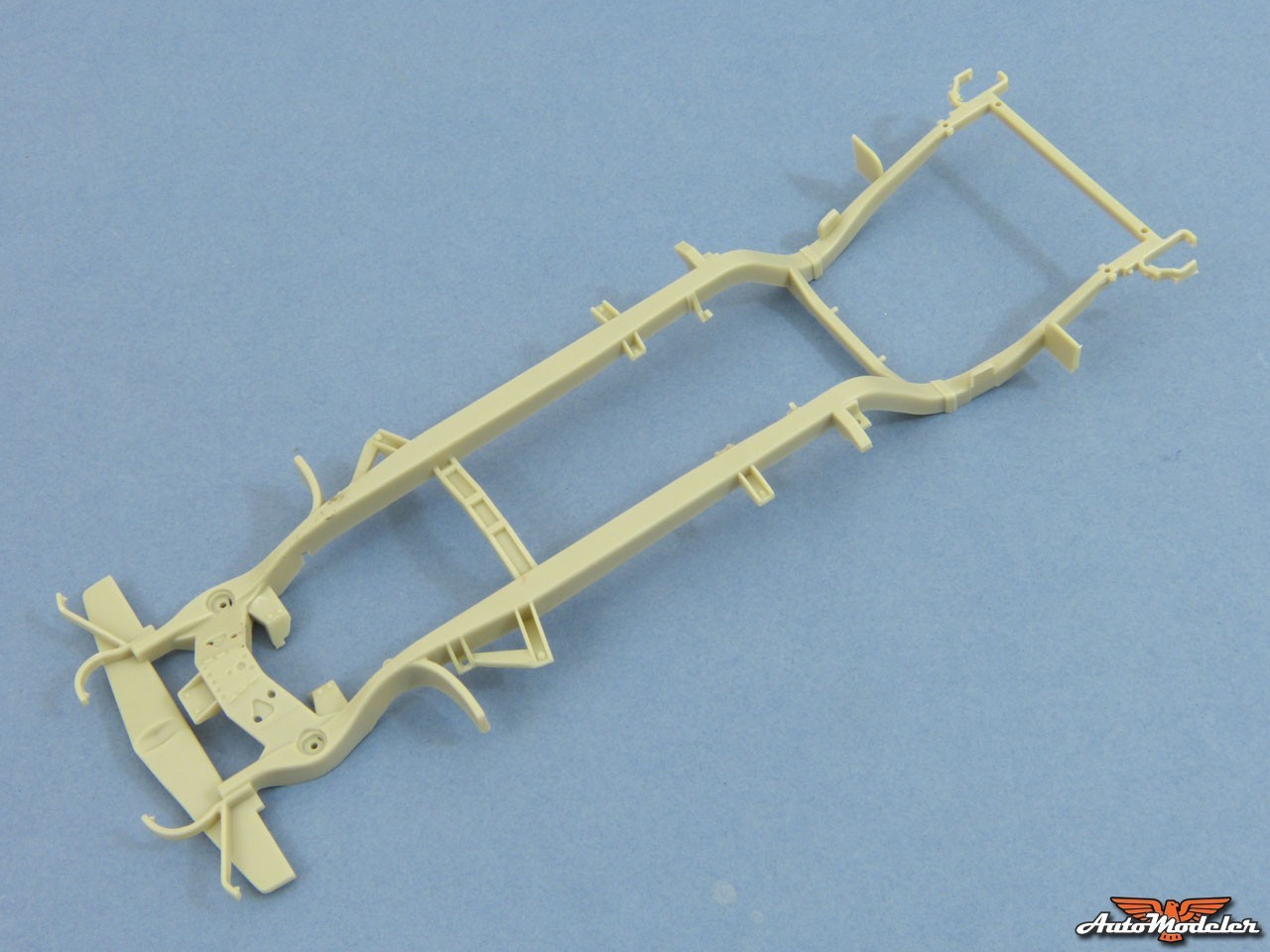

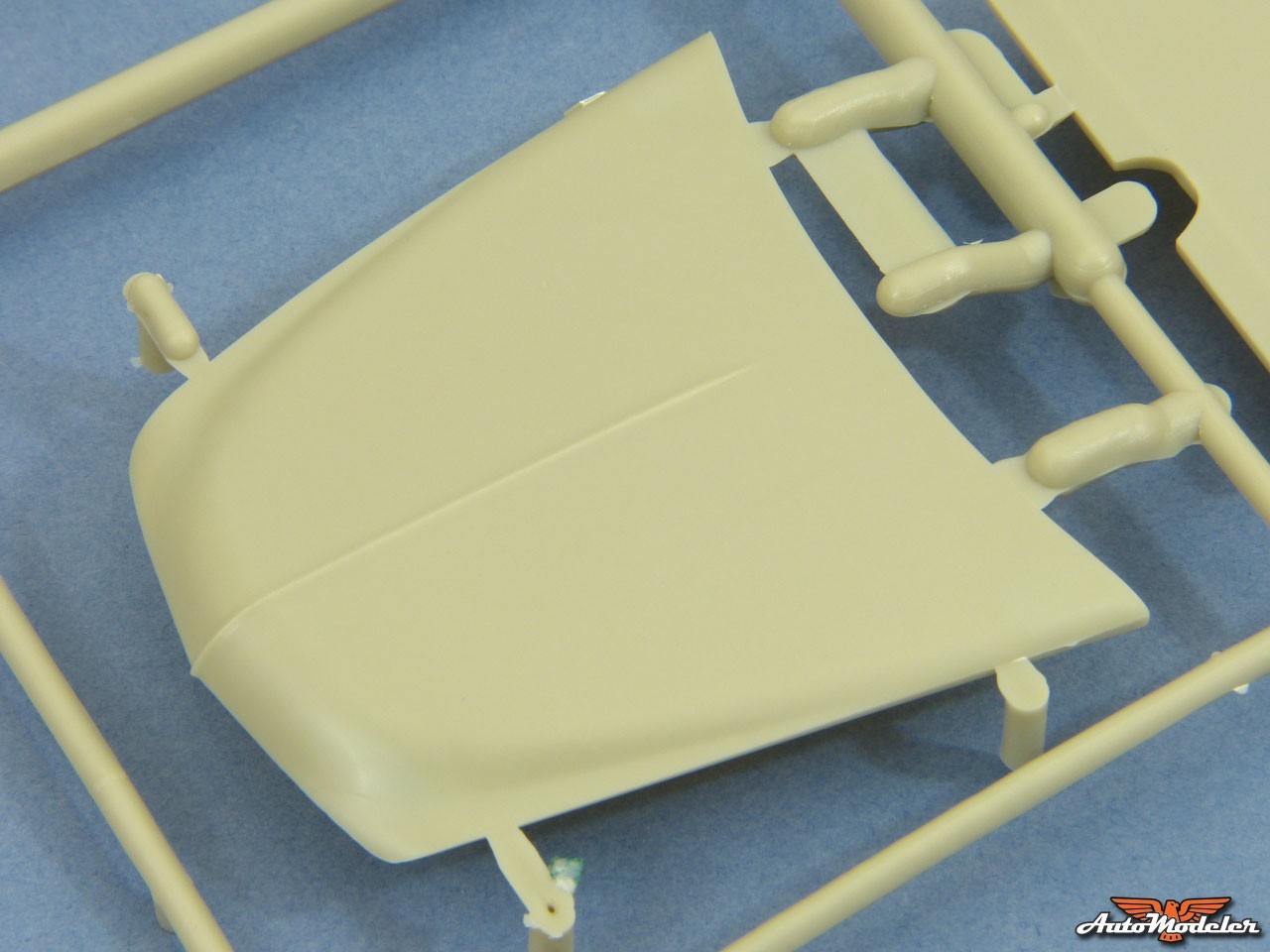
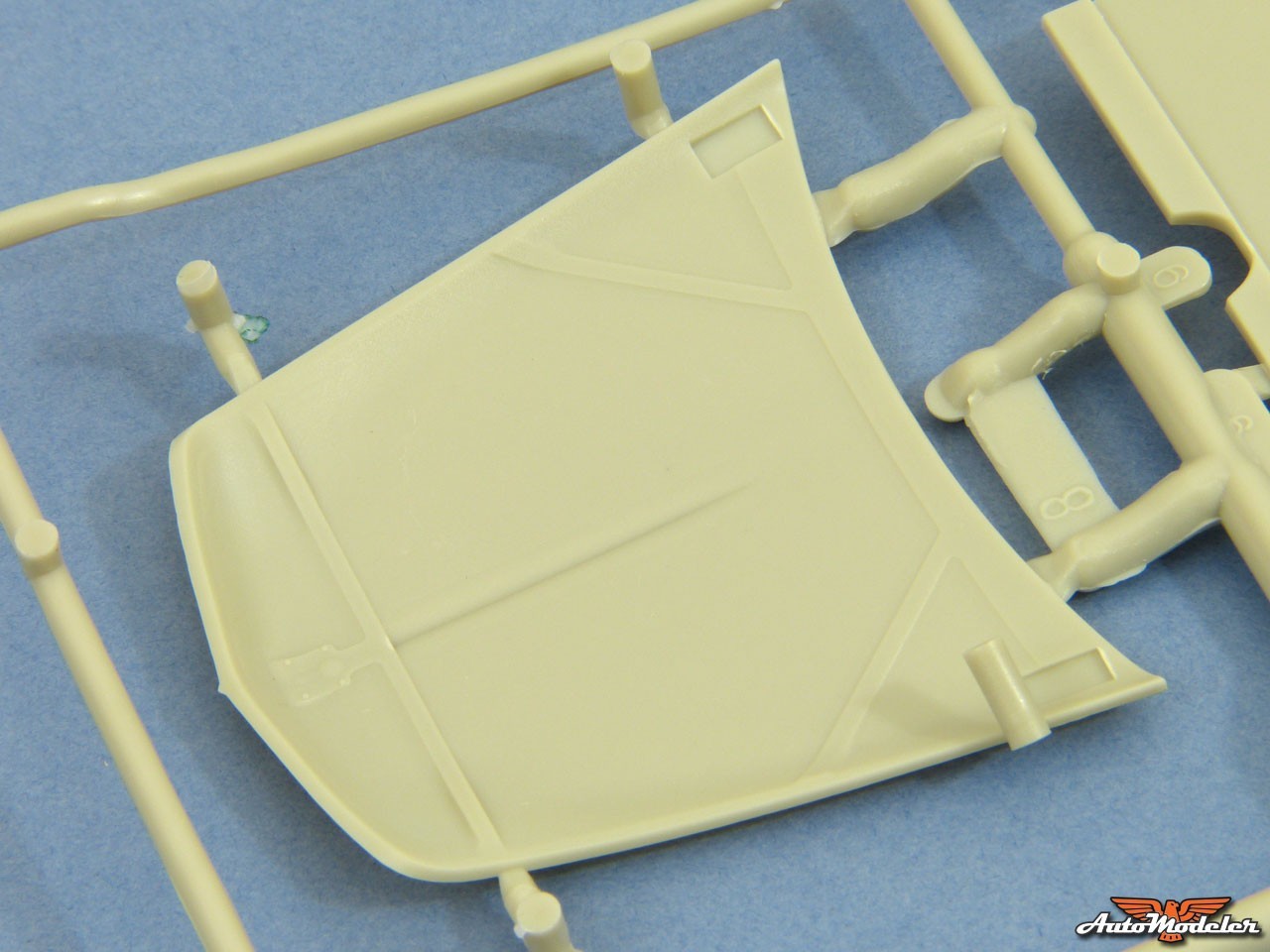
A Few Details
Moving through the 7-stage construction in sequence, things begin with a very nicely detailed 28-part miniature Firepower Hemi V8. One point worth noting is that the oil pan is shown reversed in the instructions diagrams compared with photos of the completed engine in the painting guide. Checking shot of the full-sized engine online, the painting guide appears to be correct.
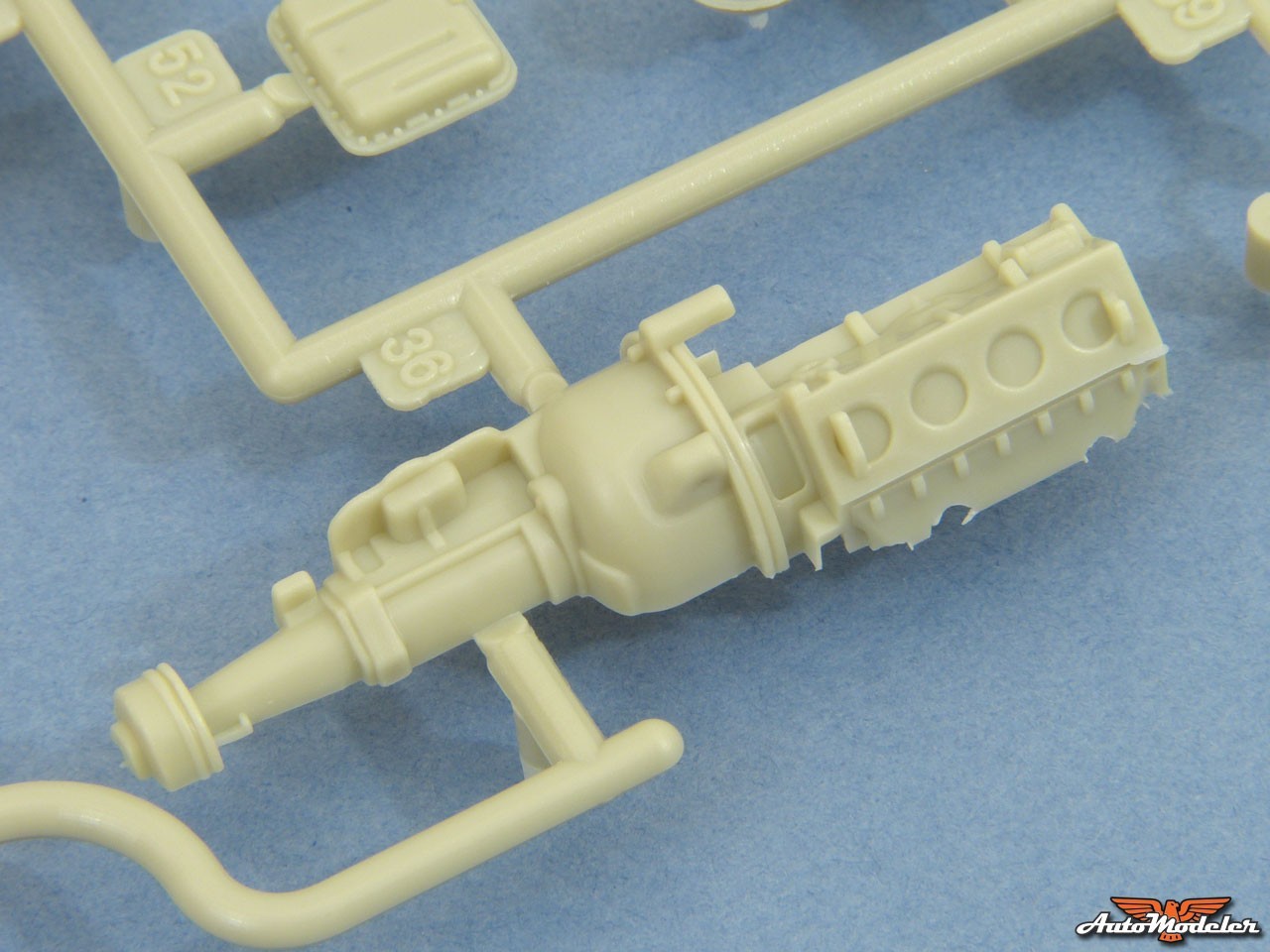

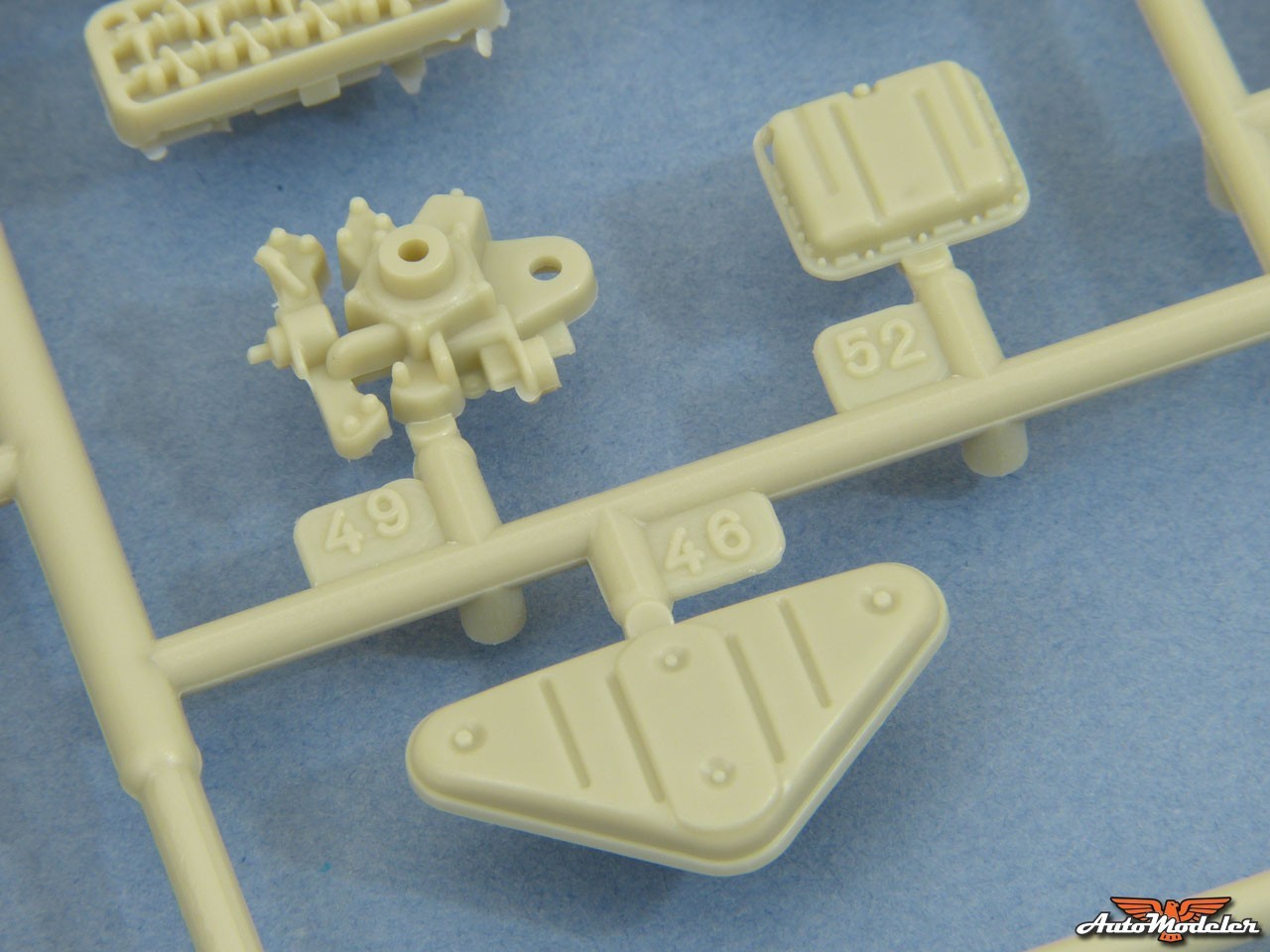
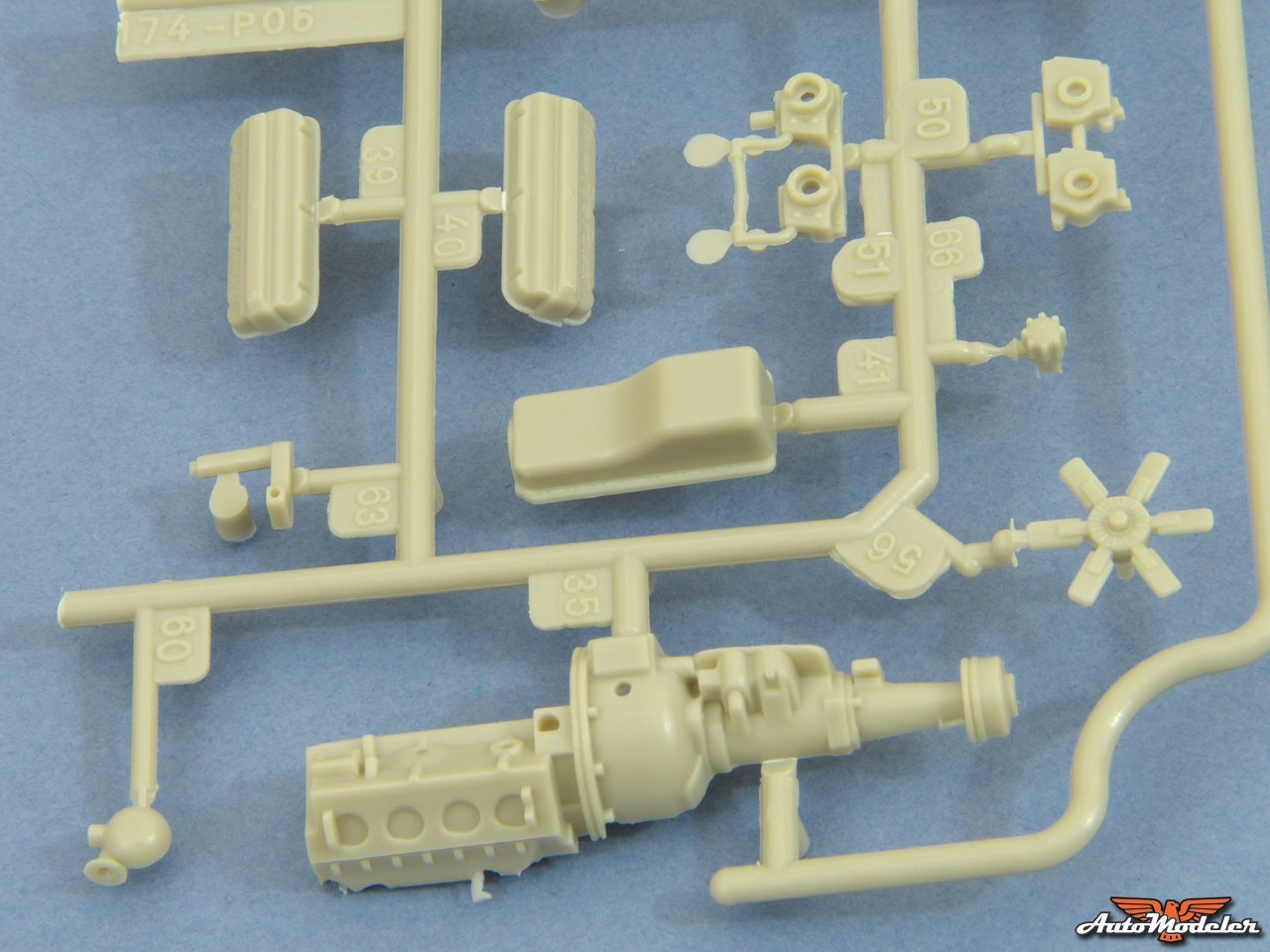
The wheels offer a choice of hub caps or wire-spokes, and the soft tyres are ready-painted with whitewalls. I found a touch of overspray on a couple of the wheels, but this is straightforward to remove, and the pre-painted parts save the hassle of masking and look much more convincing than decals. The tyre treads are crisply moulded and the runner attachments are very small and easy to hide.
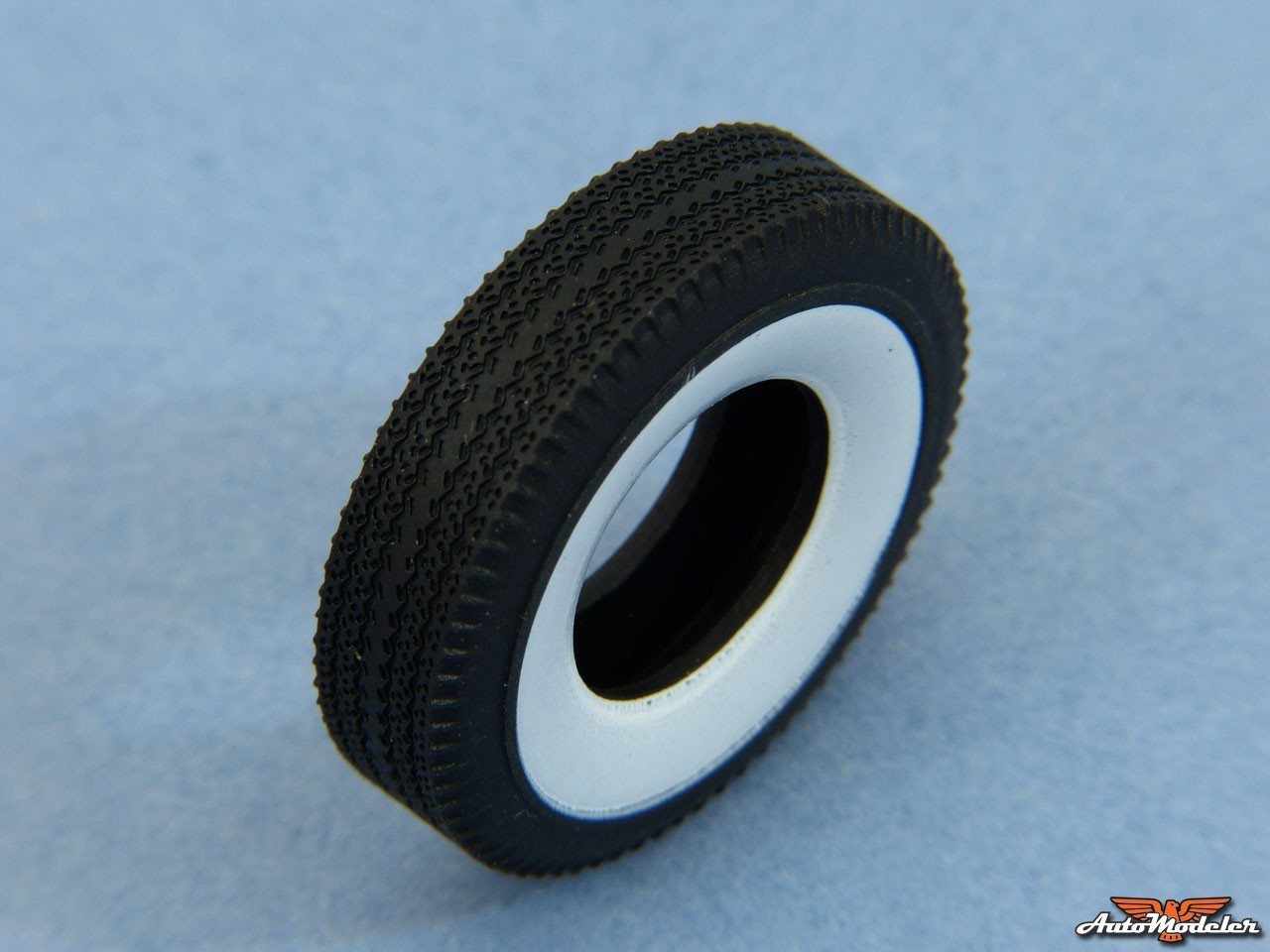
The interior is simple, but should look very good when completed. The dashboard is nicely detailed and Moebius Models provide decals for the gauges, clock and radio, along with the Chrysler logo. The bench seats are massively padded, and the steering wheel is very distinctive with it's prominent hand grips. Ejection pins on the floor look like they'll be out of sight when the model's completed, but it could be worth smoothing the ones inside the roof, because they will be visible if you look closely through the open side windows.
The next stages see the engine installed, along with the suspension and exhausts, before transmission and wheels.
The engine compartment is fitted out with horns, a battery and power brake booster, and the kit includes a heater hose. Obviously, there's plenty of scope for superdetailers, but the basics are all there - and the photos in the instructions of the completed engine and accessories look very good.
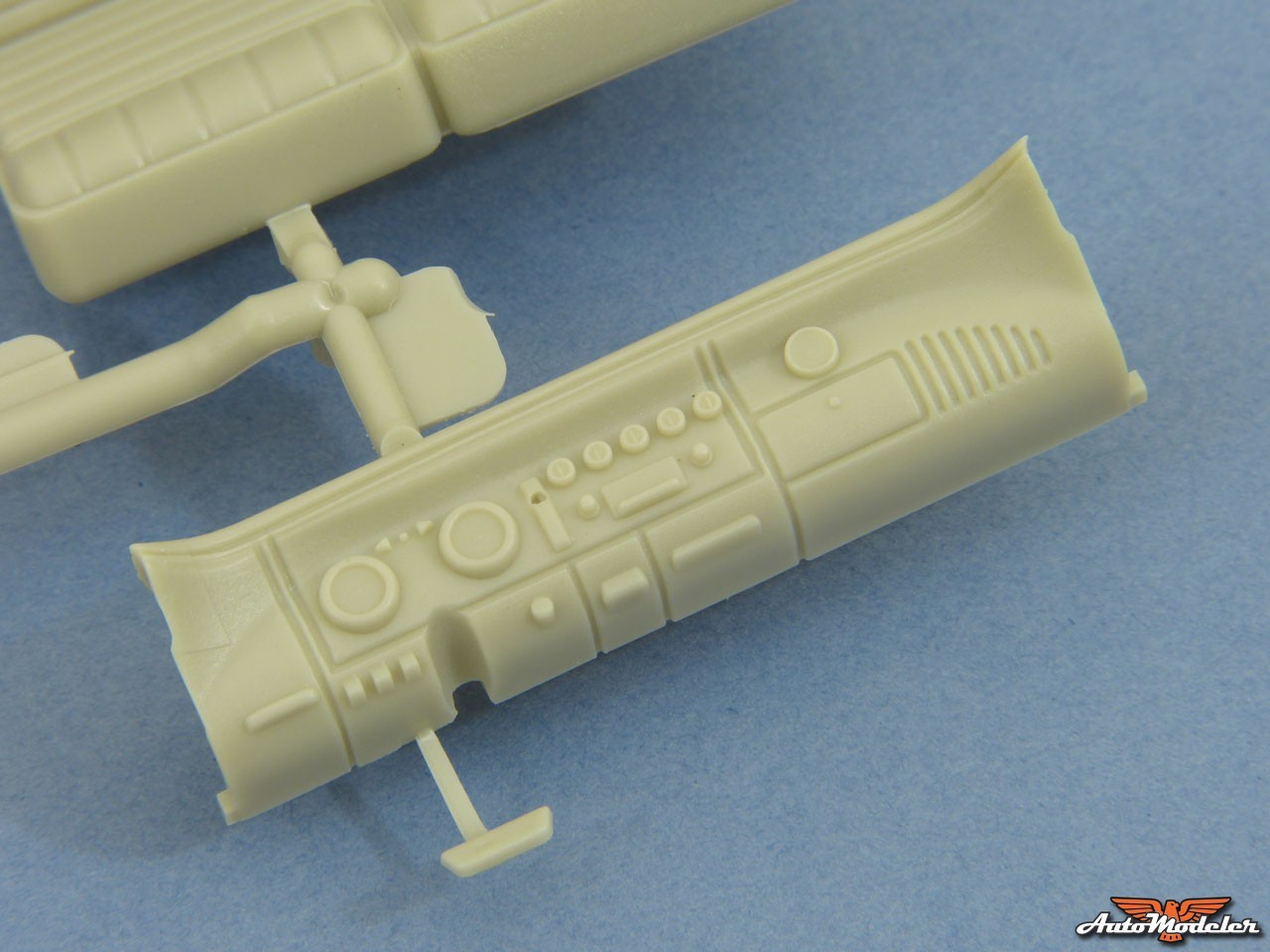


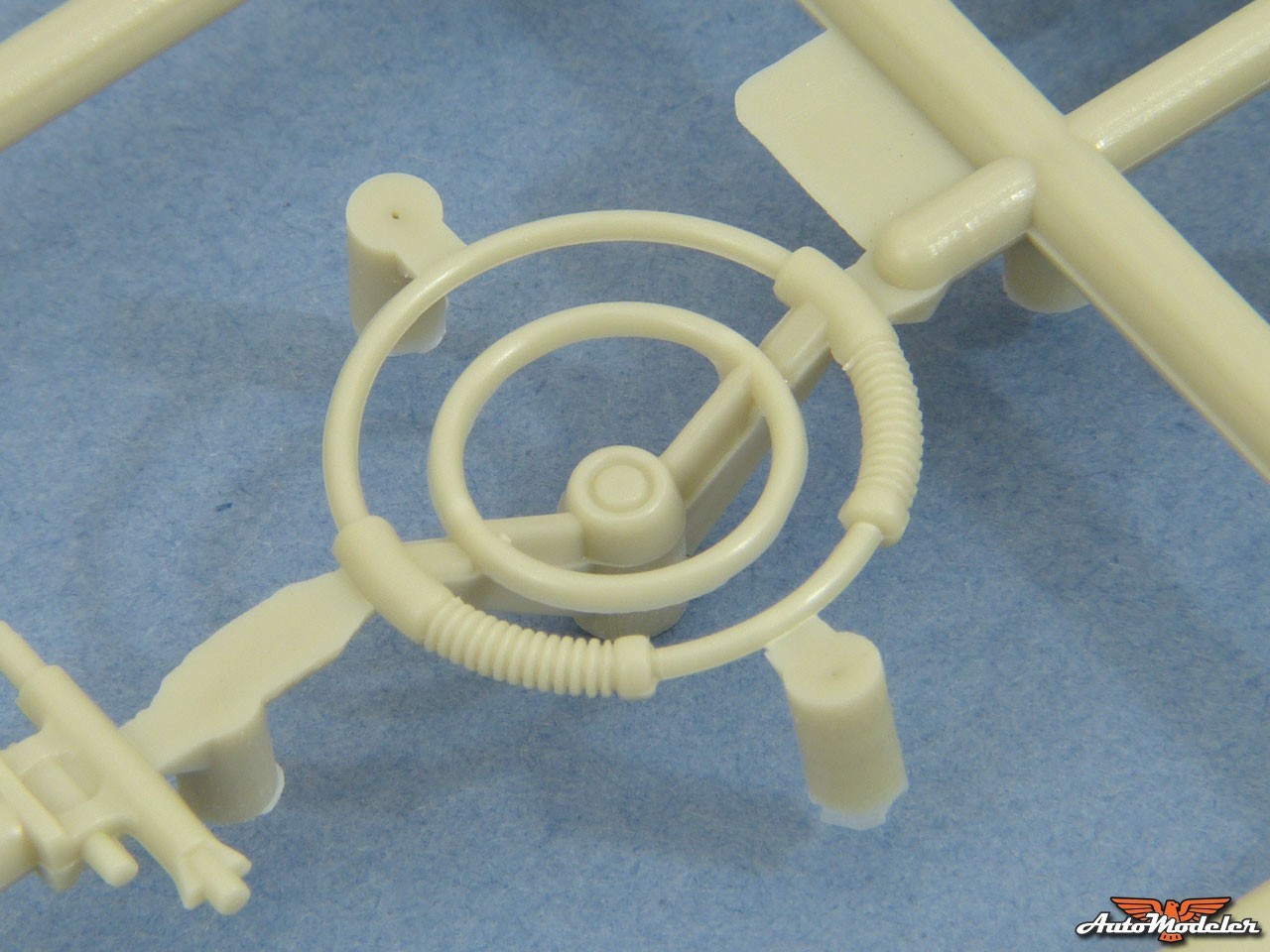
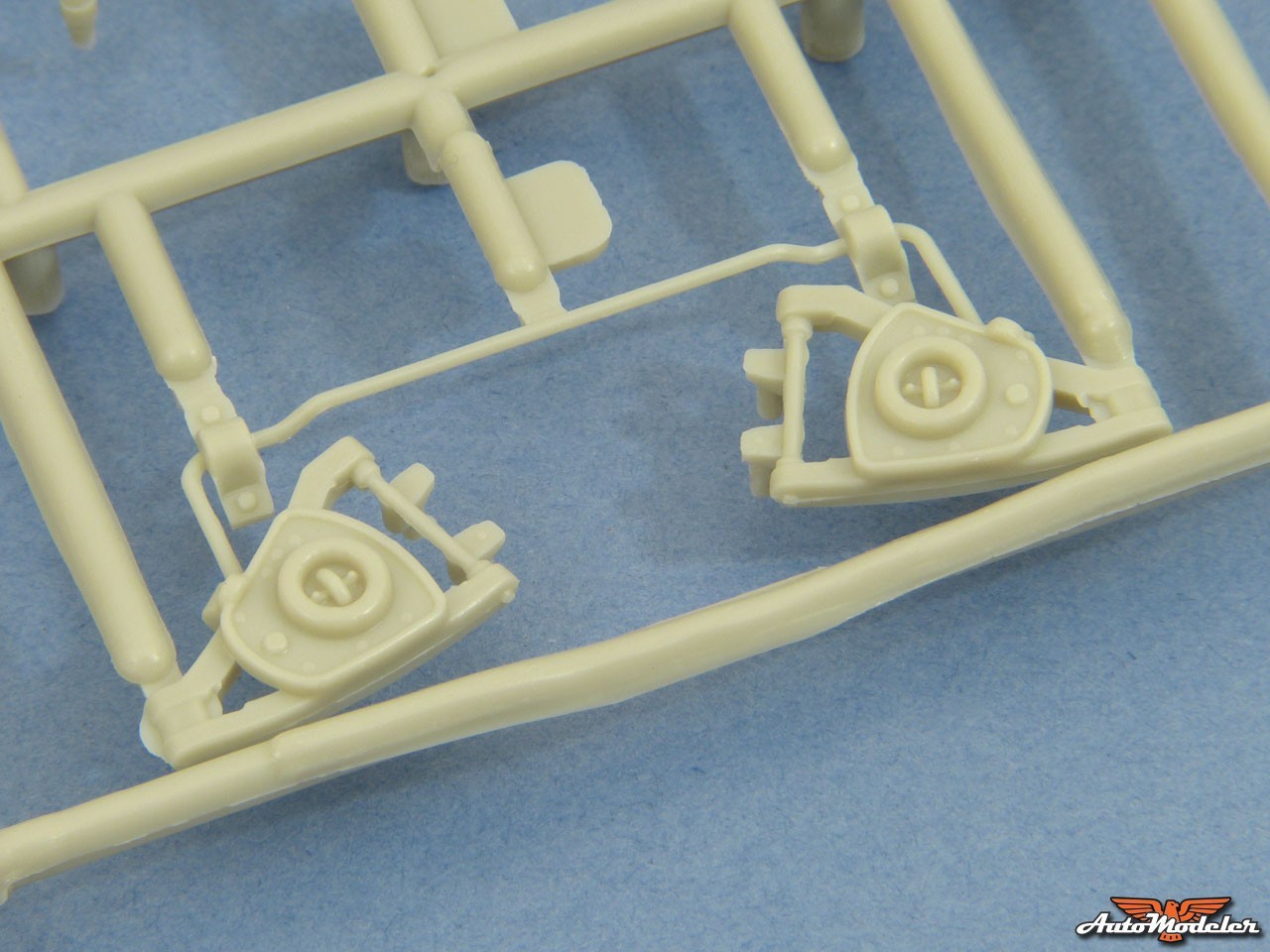
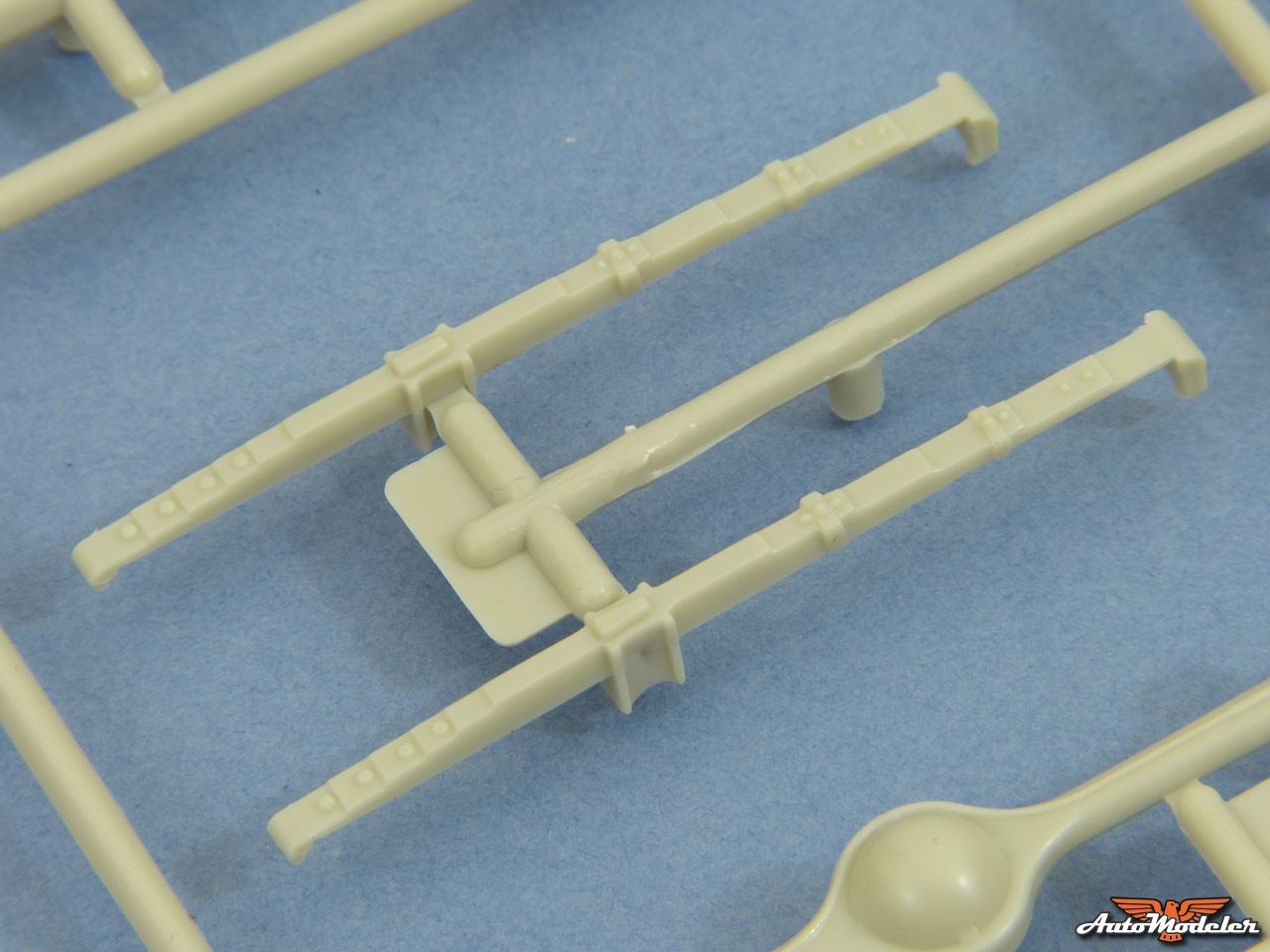
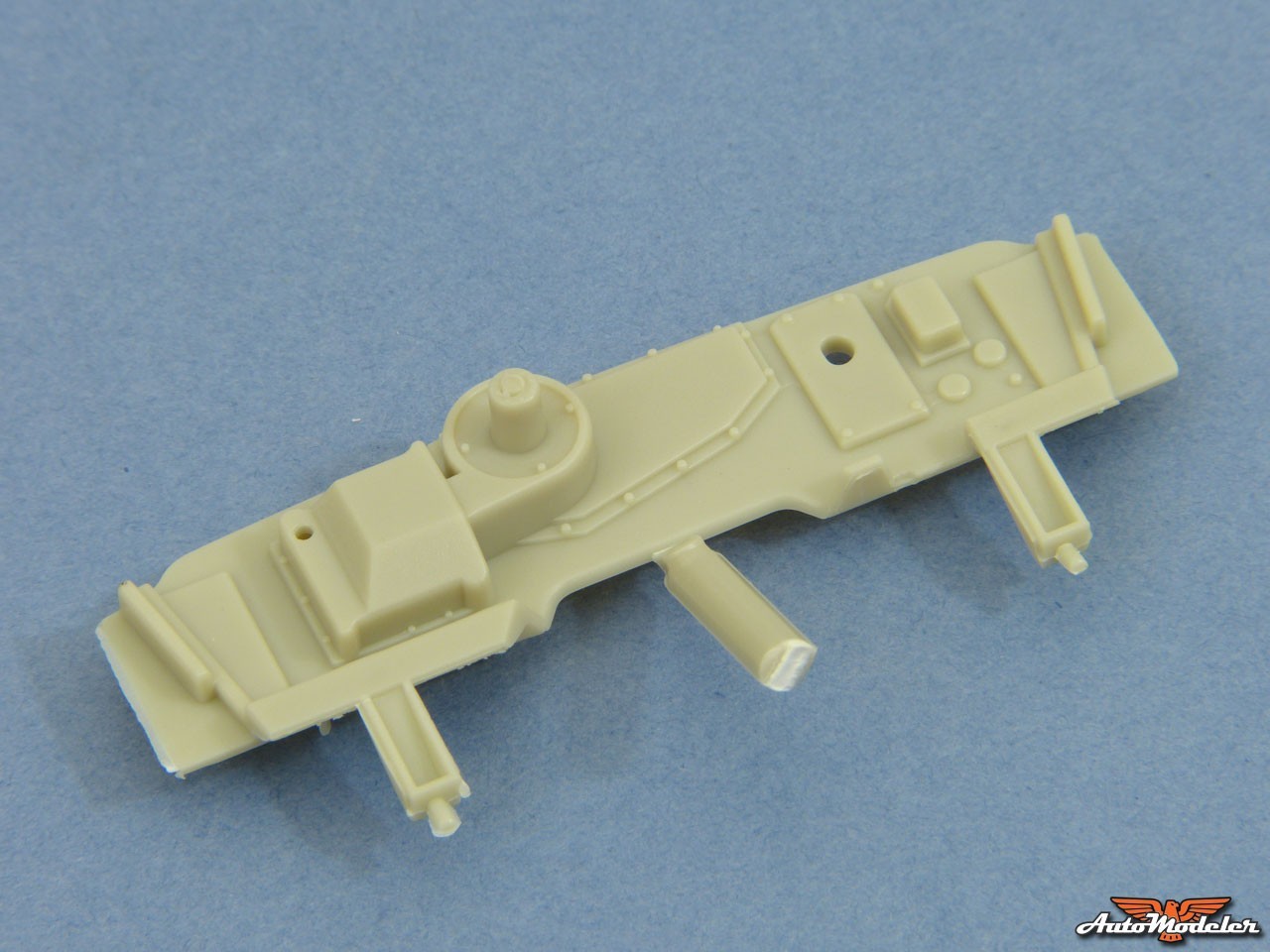
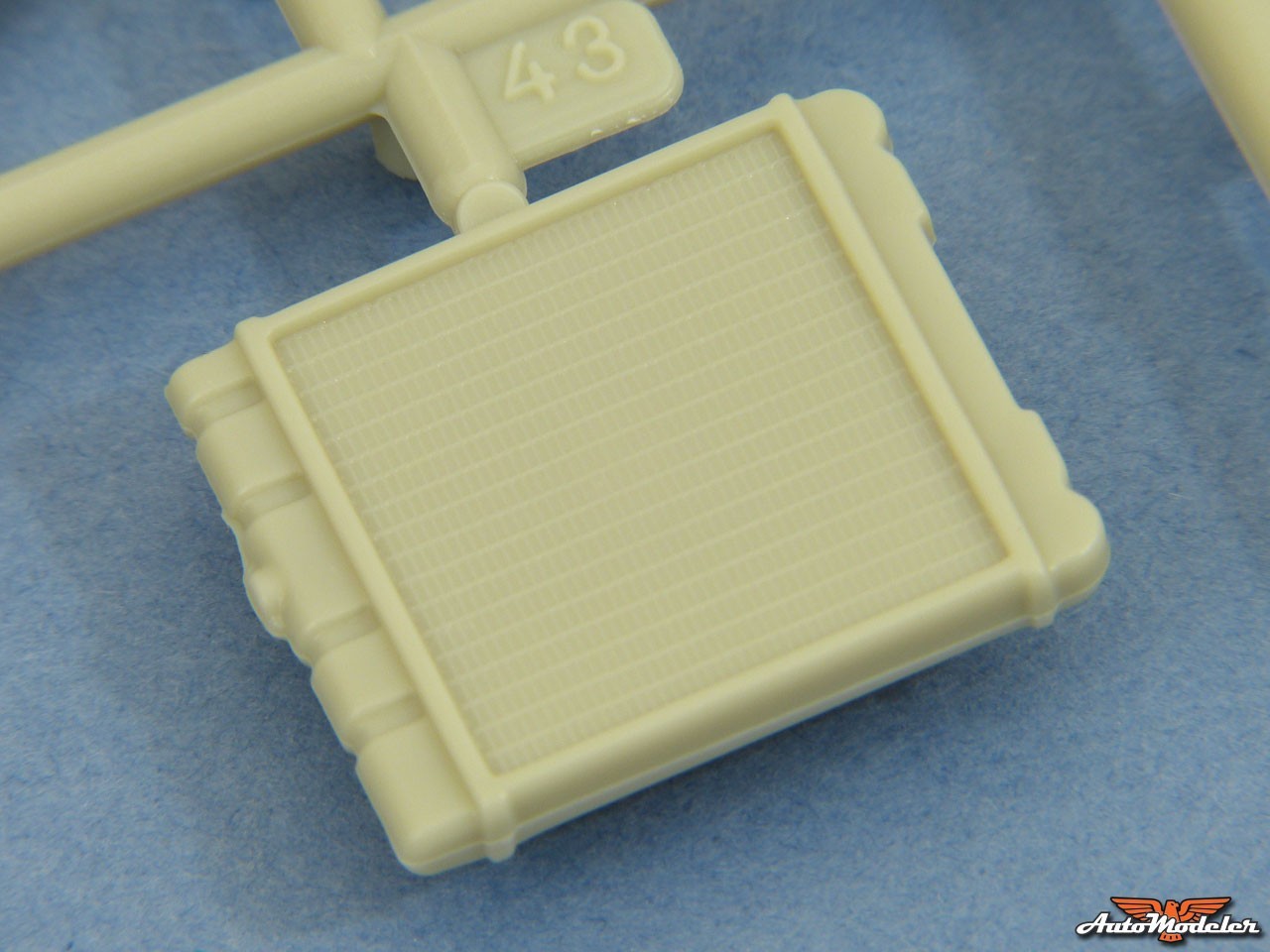
The windows install from the inside and are crystal-clear. Red-tinted covers are provided for the brake lights.
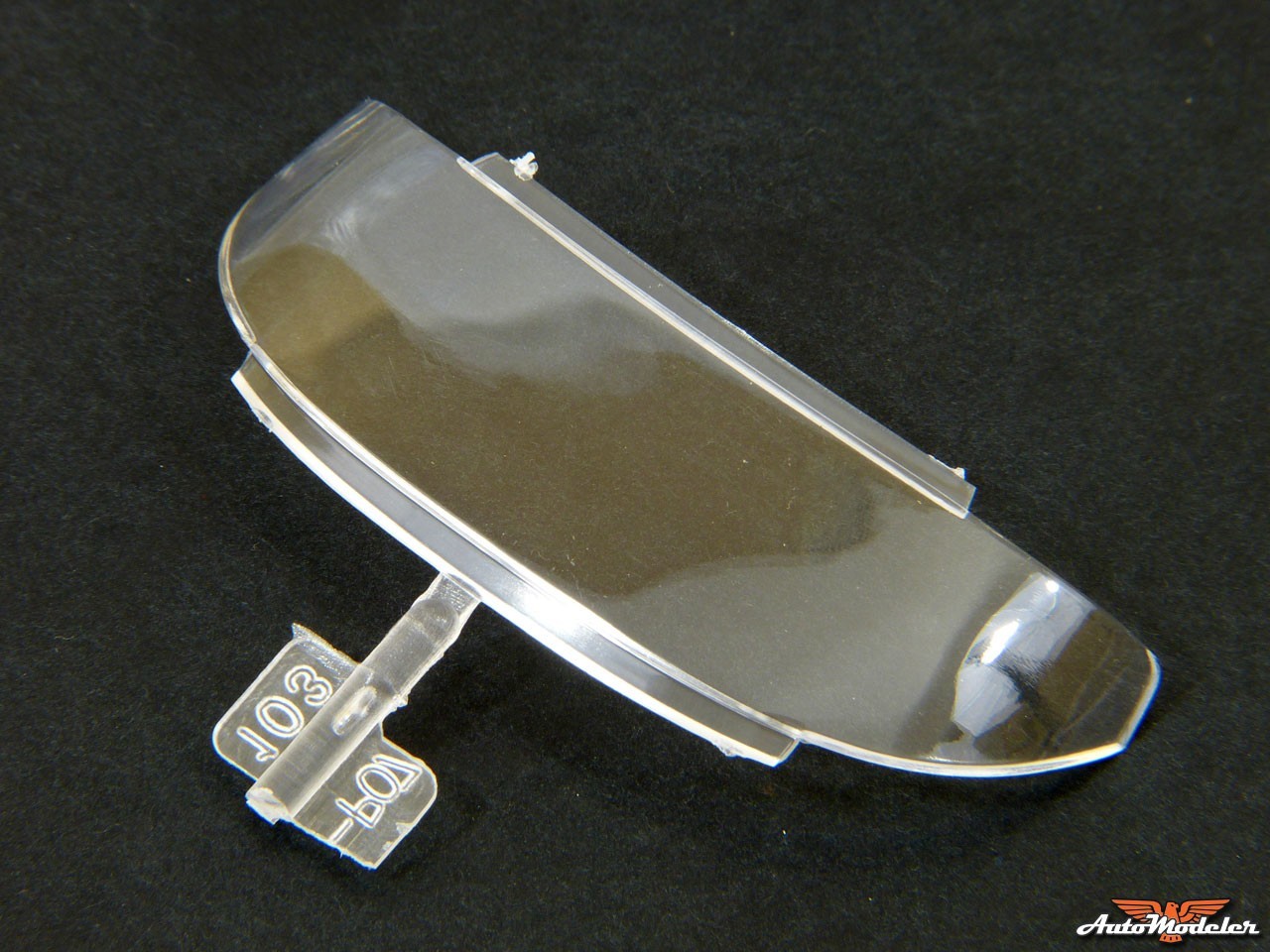
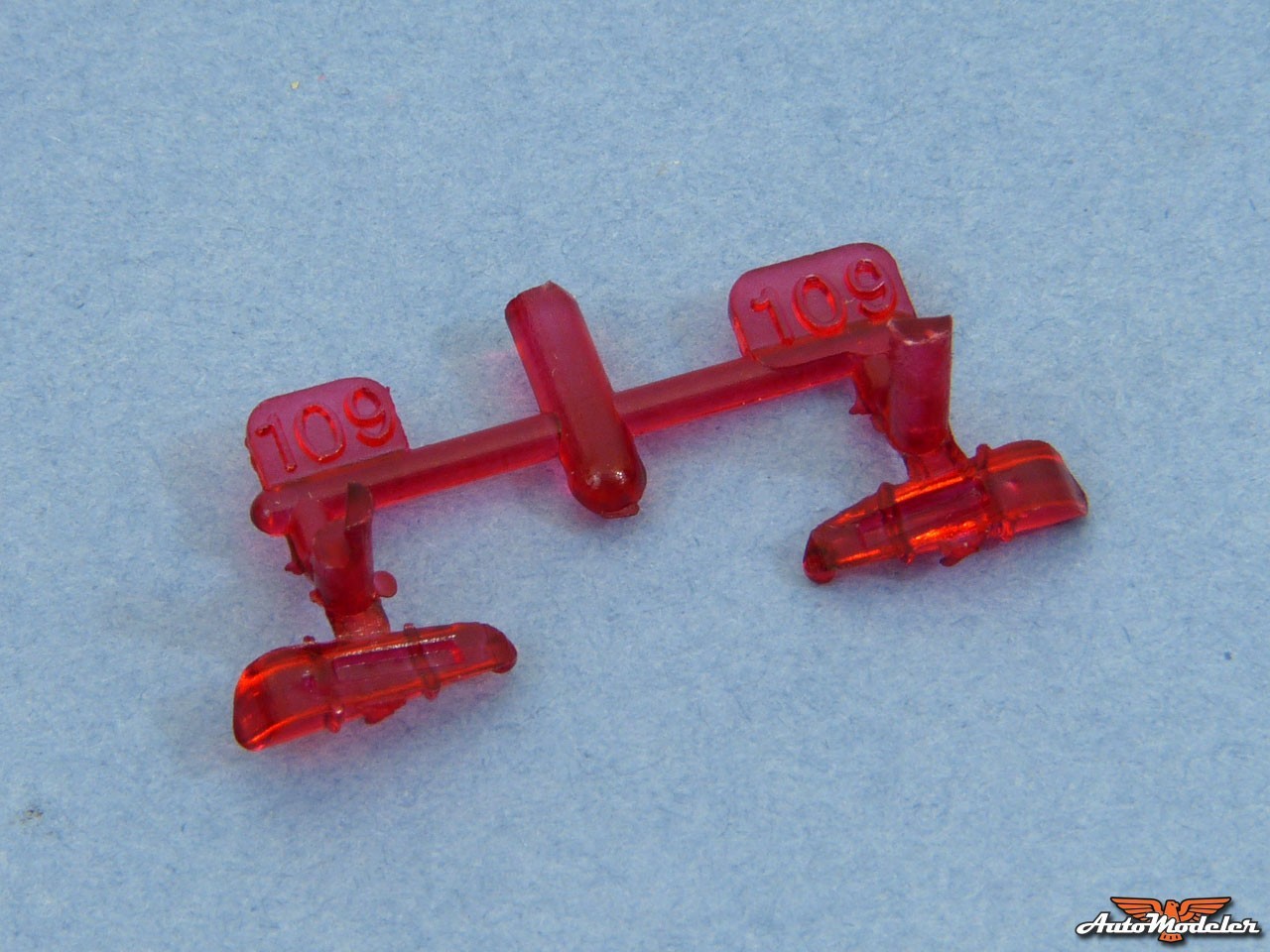
Instructions, Painting and Decals
The assembly guide is printed in colour on high quality glossy stock as a 6-page fold-out sheet. The diagrams are clearly drawn, and are accompanied by full written instructions - sadly, something of a rarity these days. Every part is named - which I really like - so you get an idea of what made the original car "tick" as you construct it.
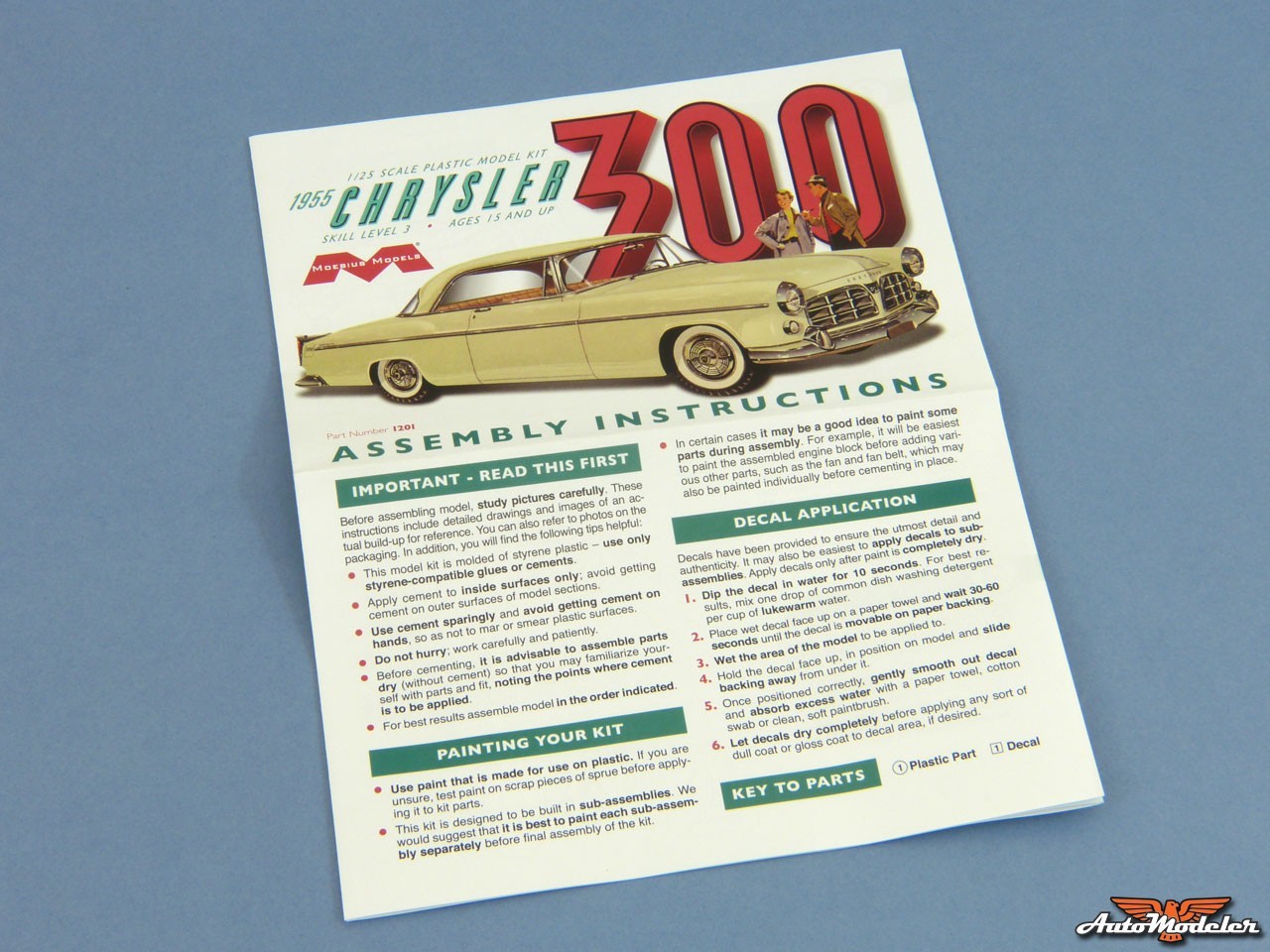
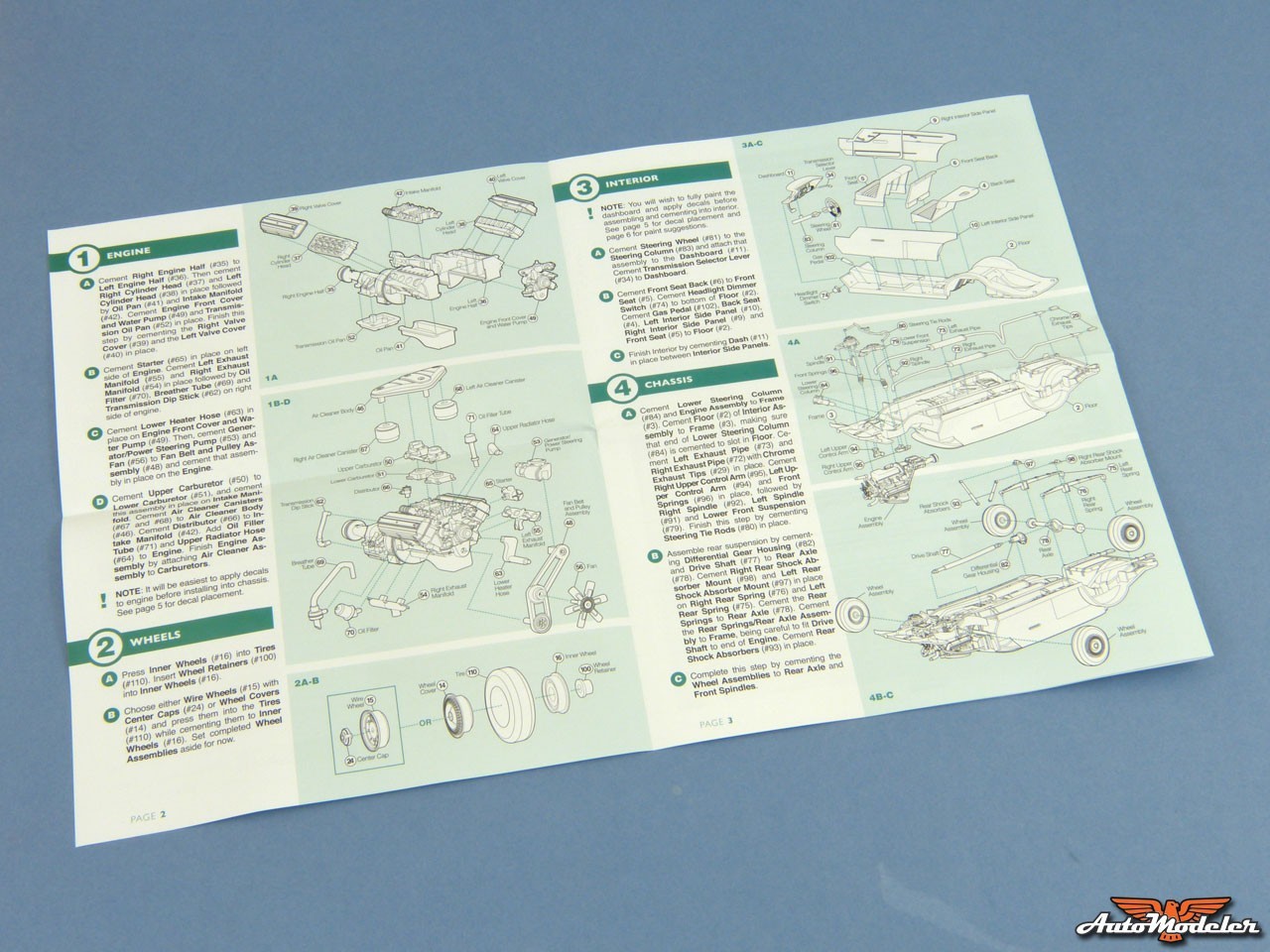
Basic colour matches are provided for Testors paints, but modellers who can't purchase these locally shouldn't have any problem finding alternatives. For really accurate matches of the original Chrysler finishes, Moebius recommend MCW Automotive Finishes.
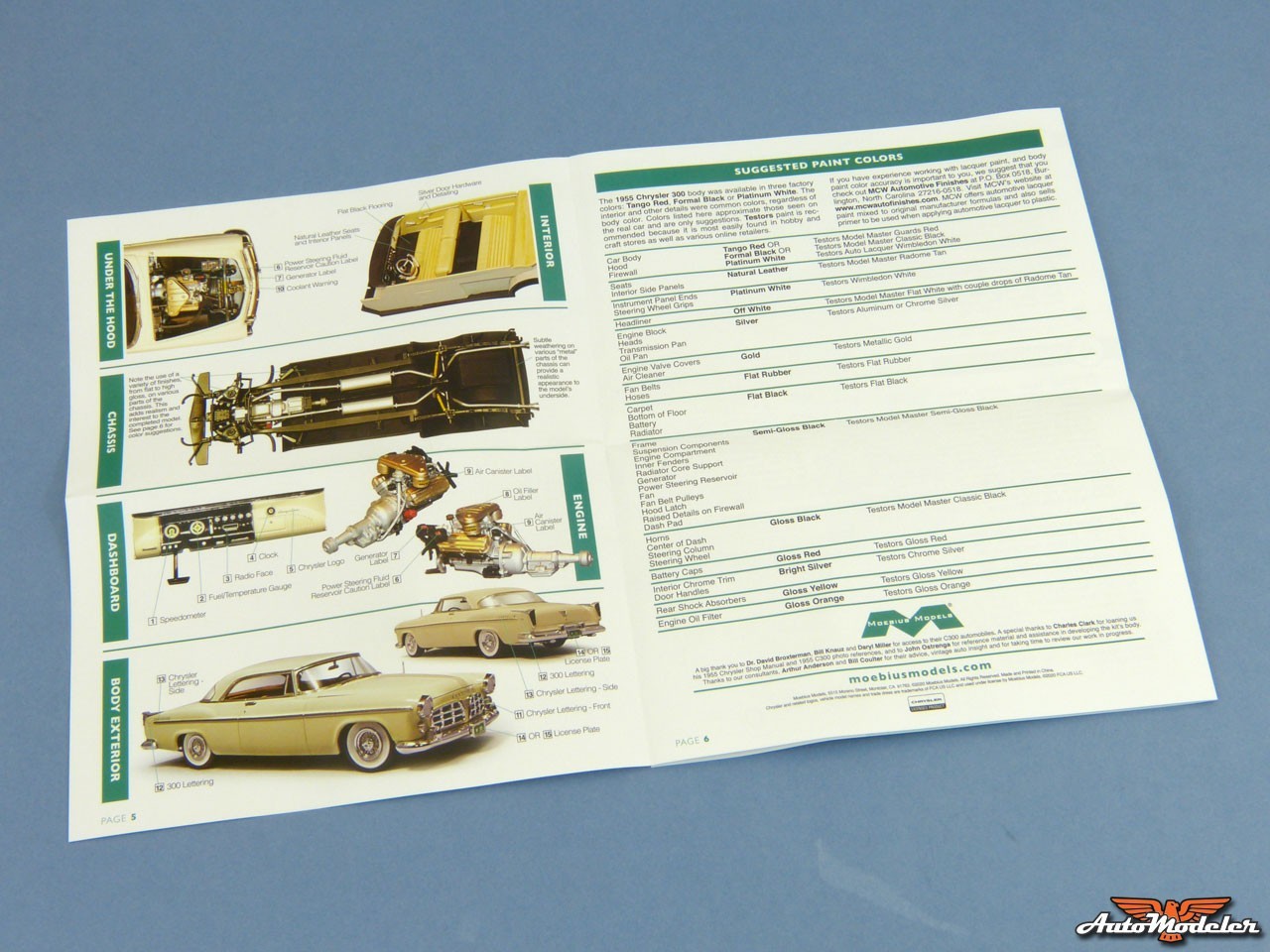
The small decal sheet is printed in perfect register in my kit, and includes licence plates, metallic maker's logos, instrument faces and labels for the engine. The decals are glossy and look to be extremely thin, so they should snuggle down well over raised details.

Conclusion
The 1955 Chrysler 300 is an elegant beast - and Moebius Models' kit looks like it will really capture it's refined good looks. On the basis of dry-fitting the main parts and starting work on the engine, it promises to be a straightforward build straight from the box, while also having masses of potential for superdetailers and customisers.
Expect to pay around £50 in the UK, but I bought my kit from Supermart USA through Amazon. They delivered very promptly for £37 (give or take a few pennies) post-free.
Please remember, when contacting retailers or manufacturers, to mention that you saw their products highlighted here - on AutoModeler.



























